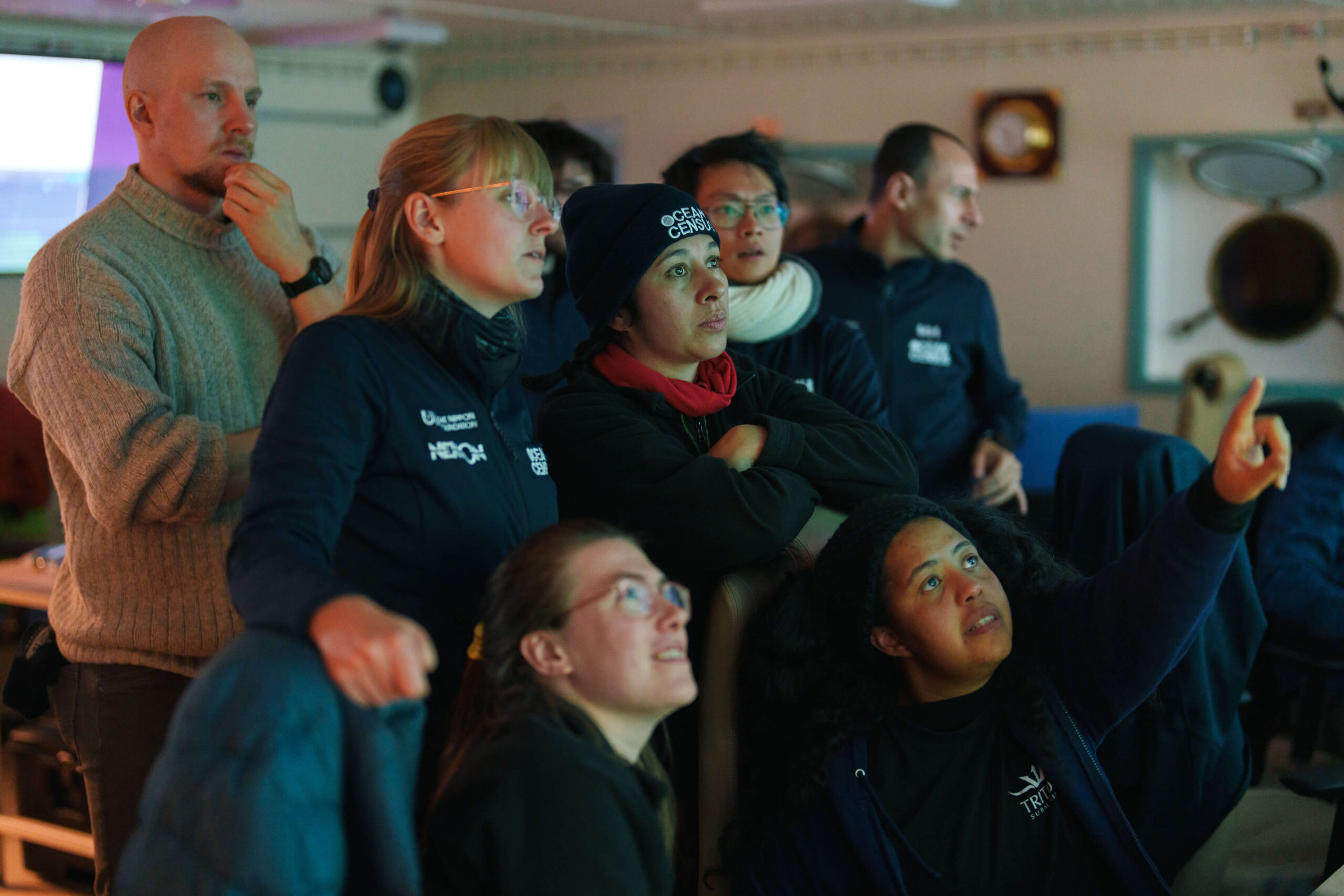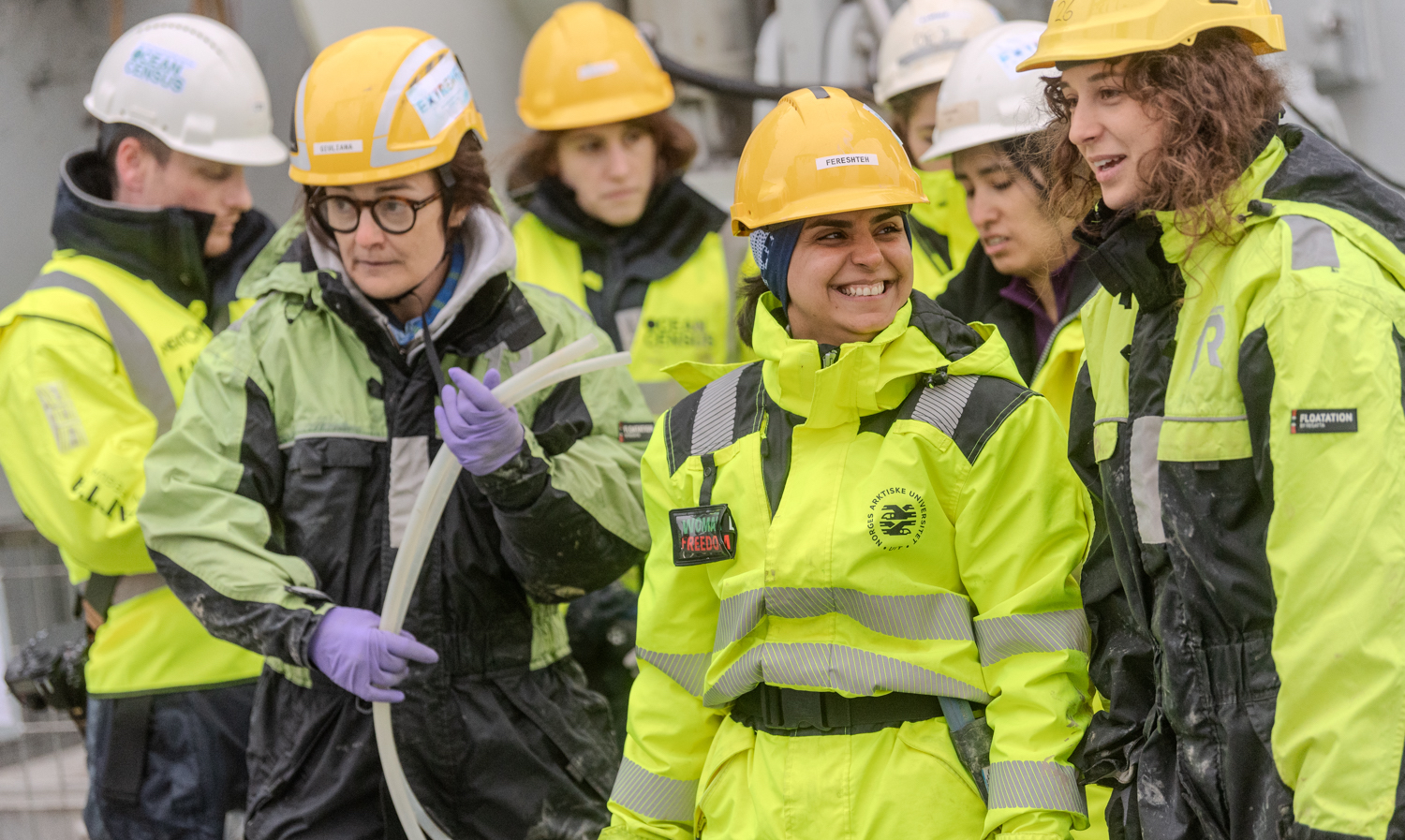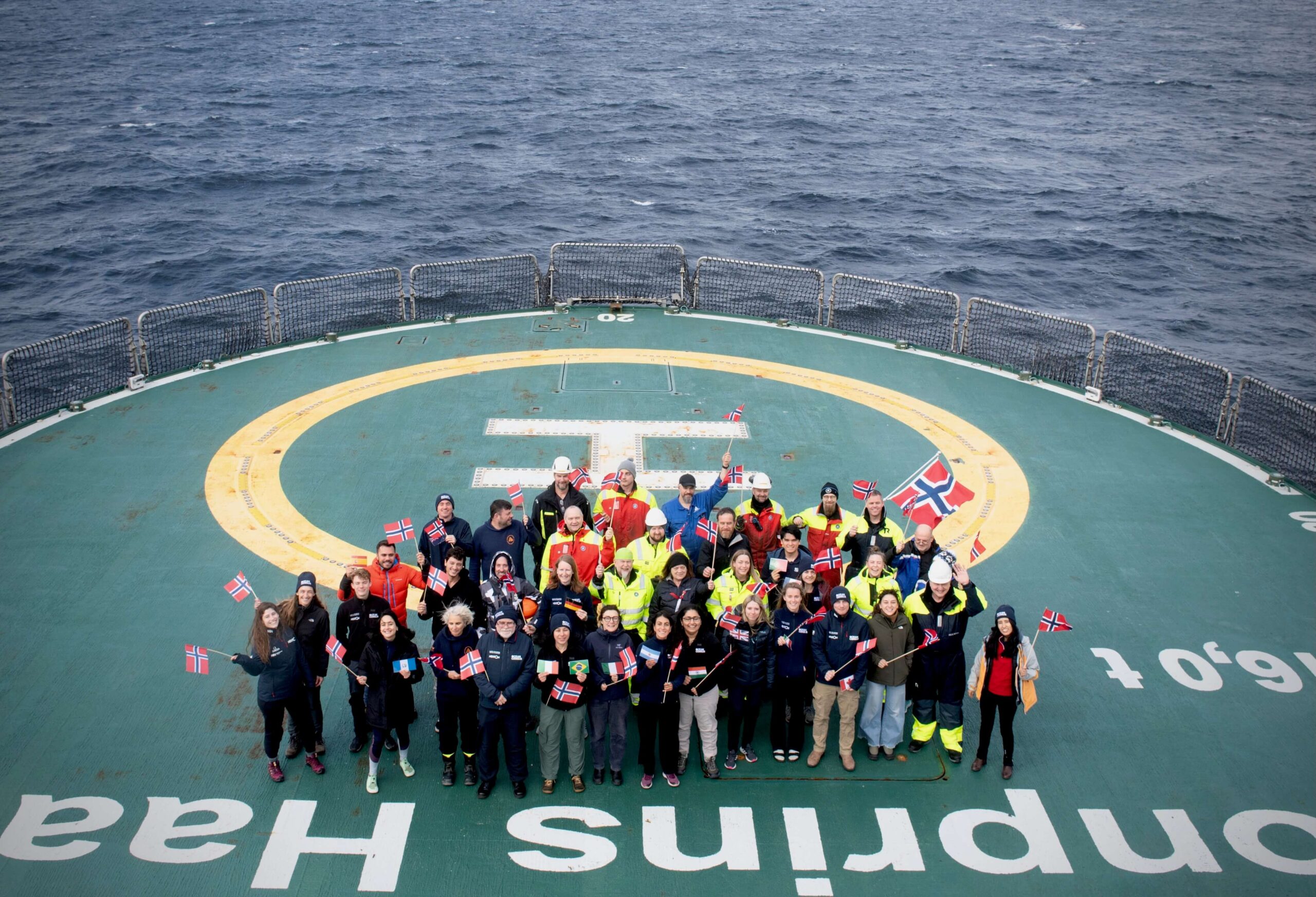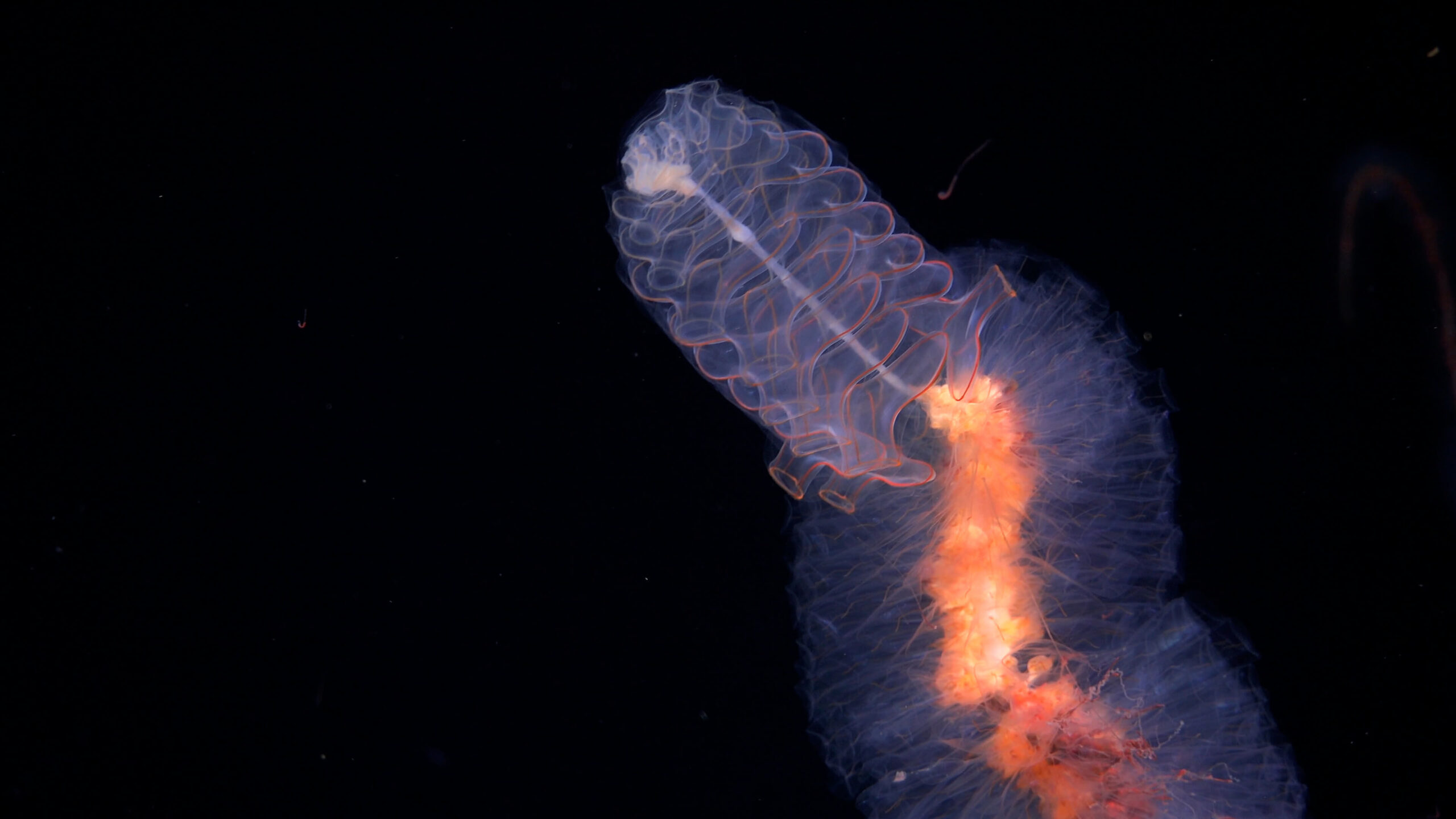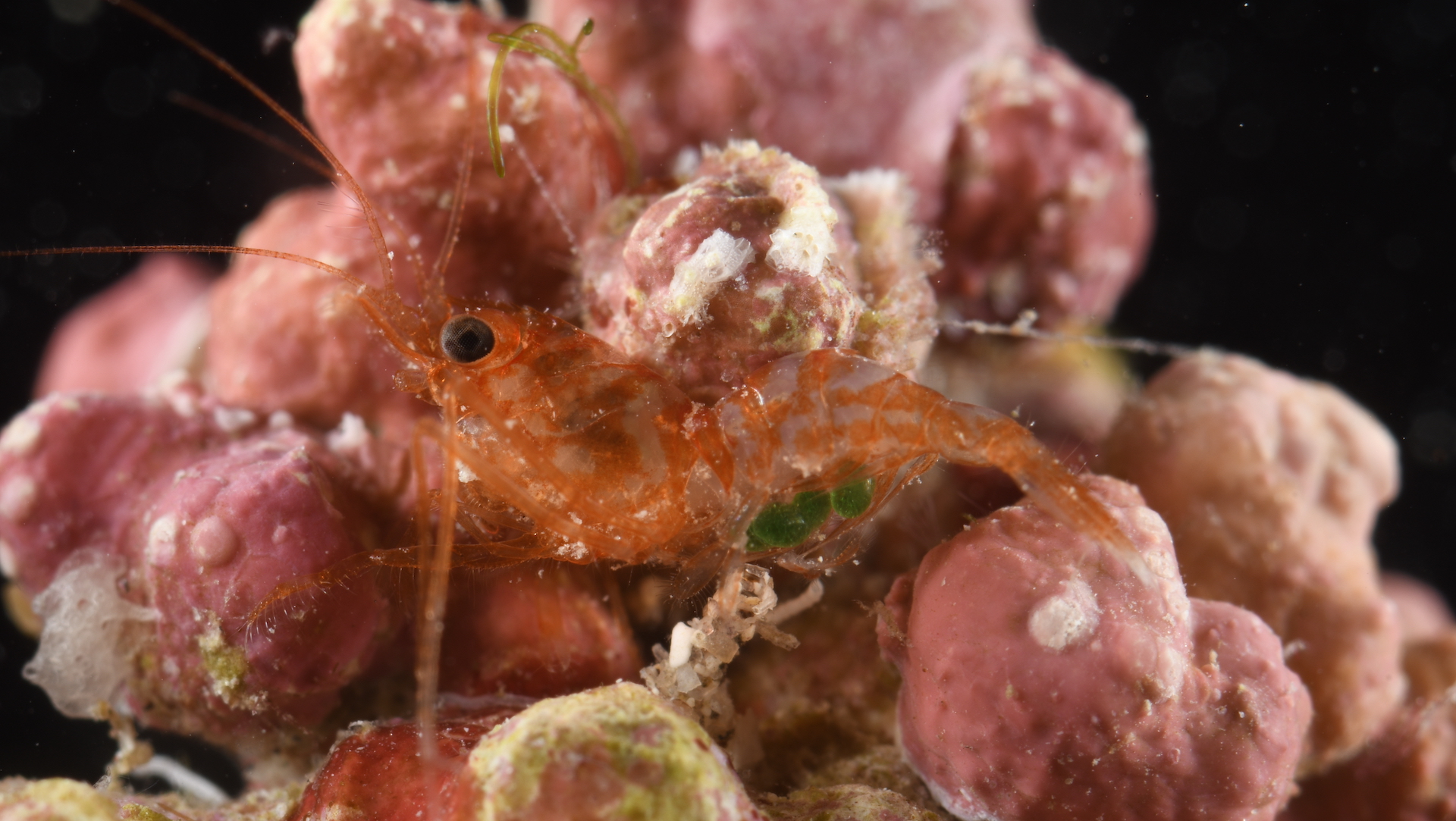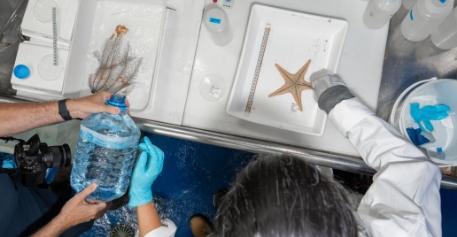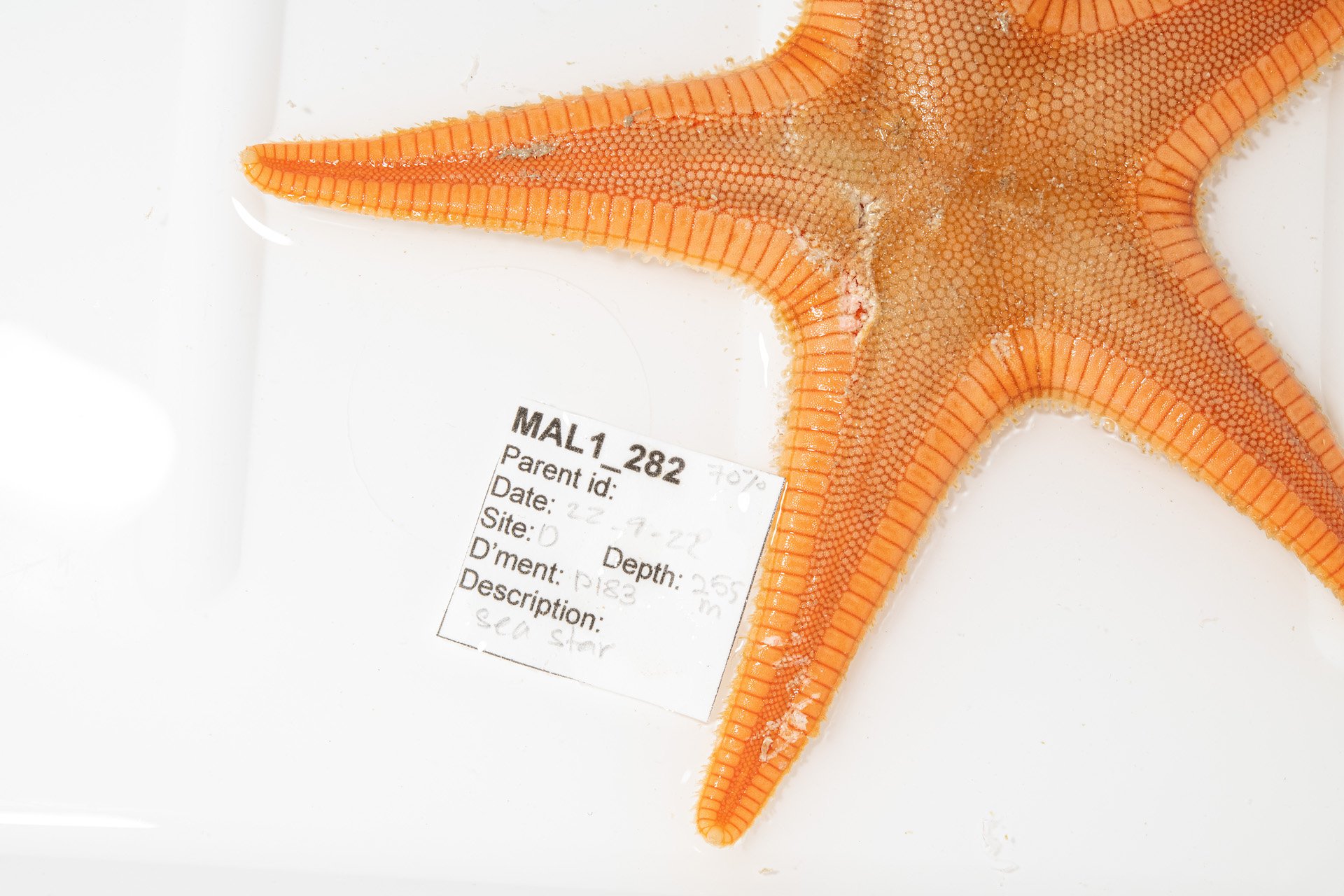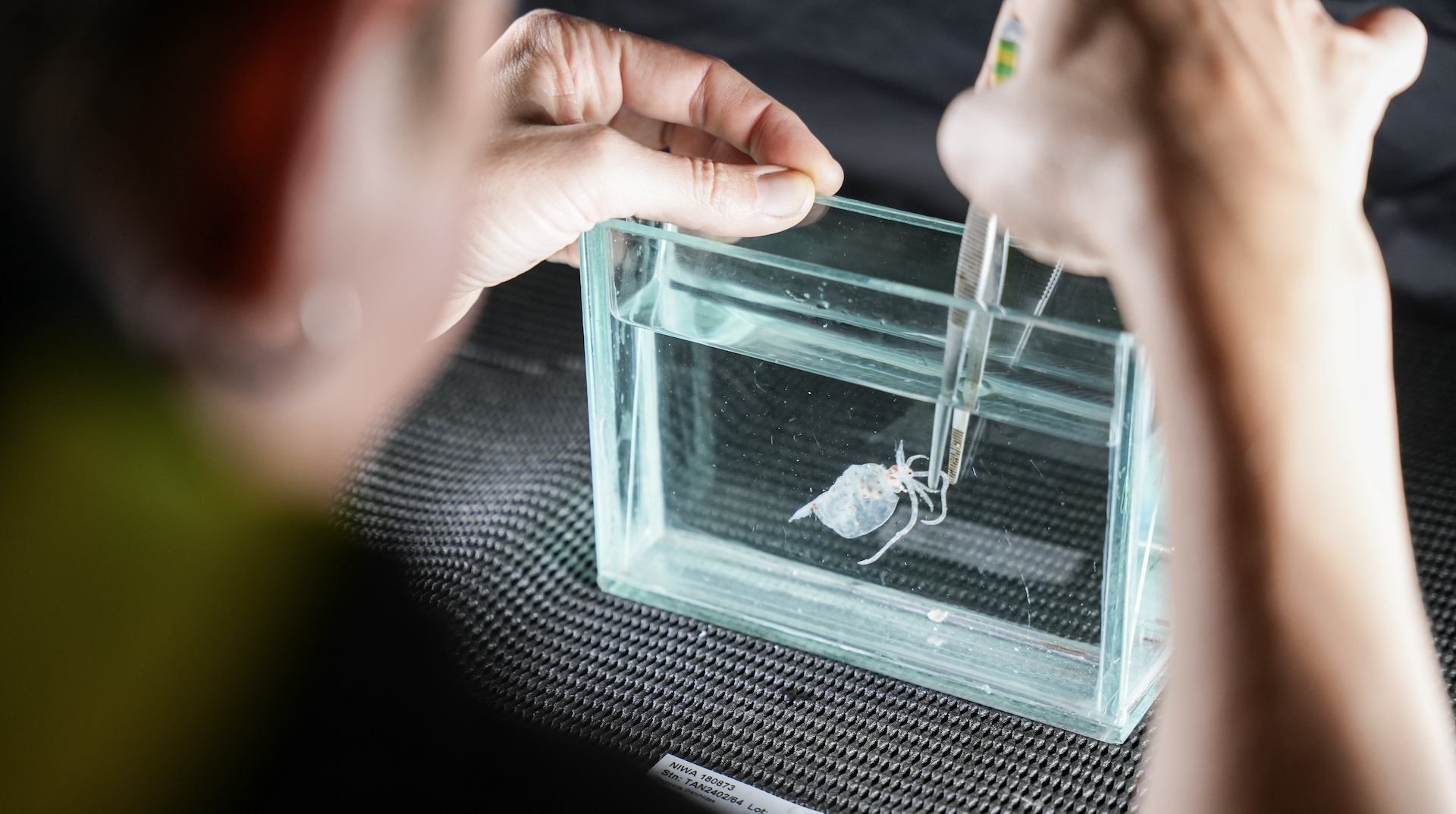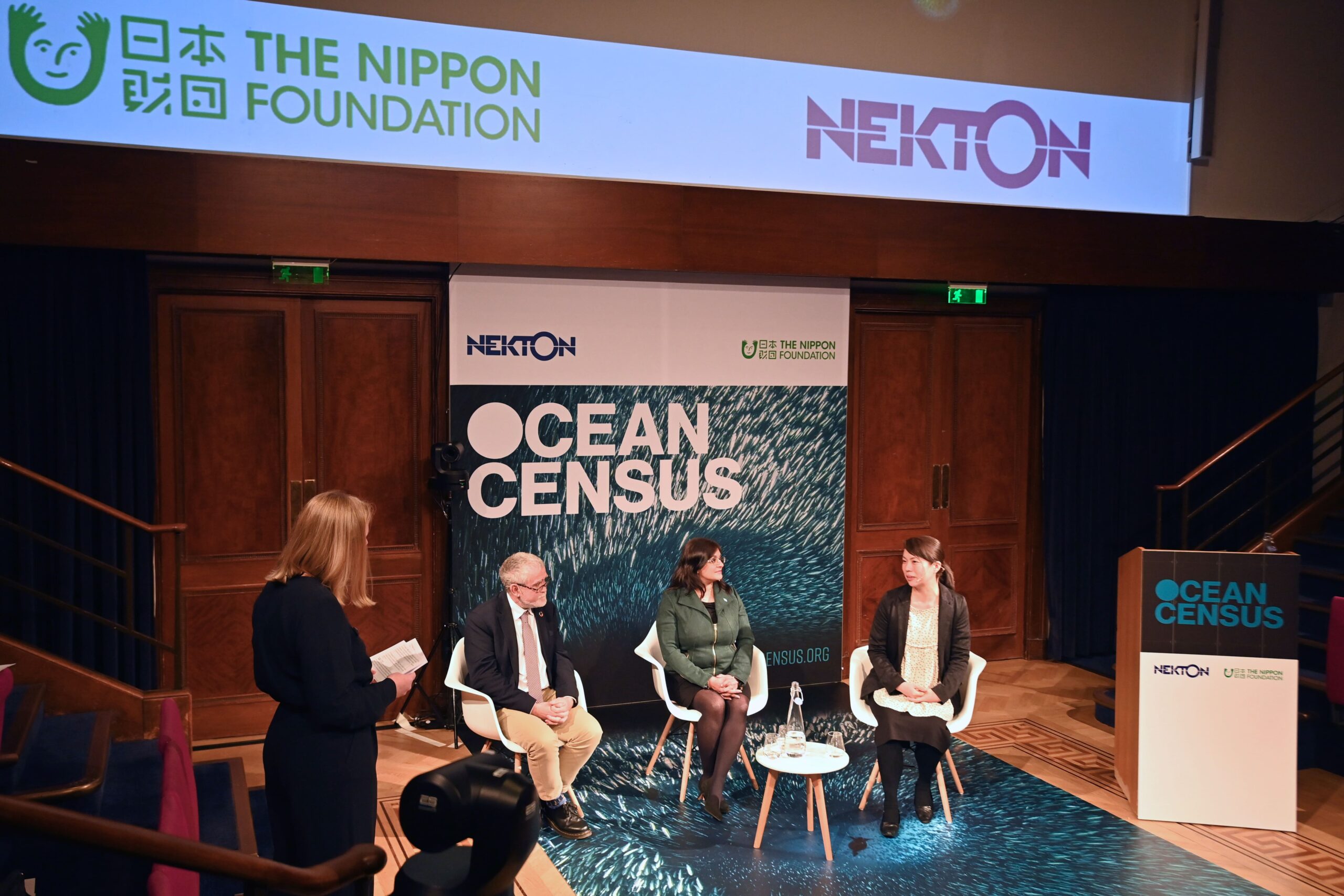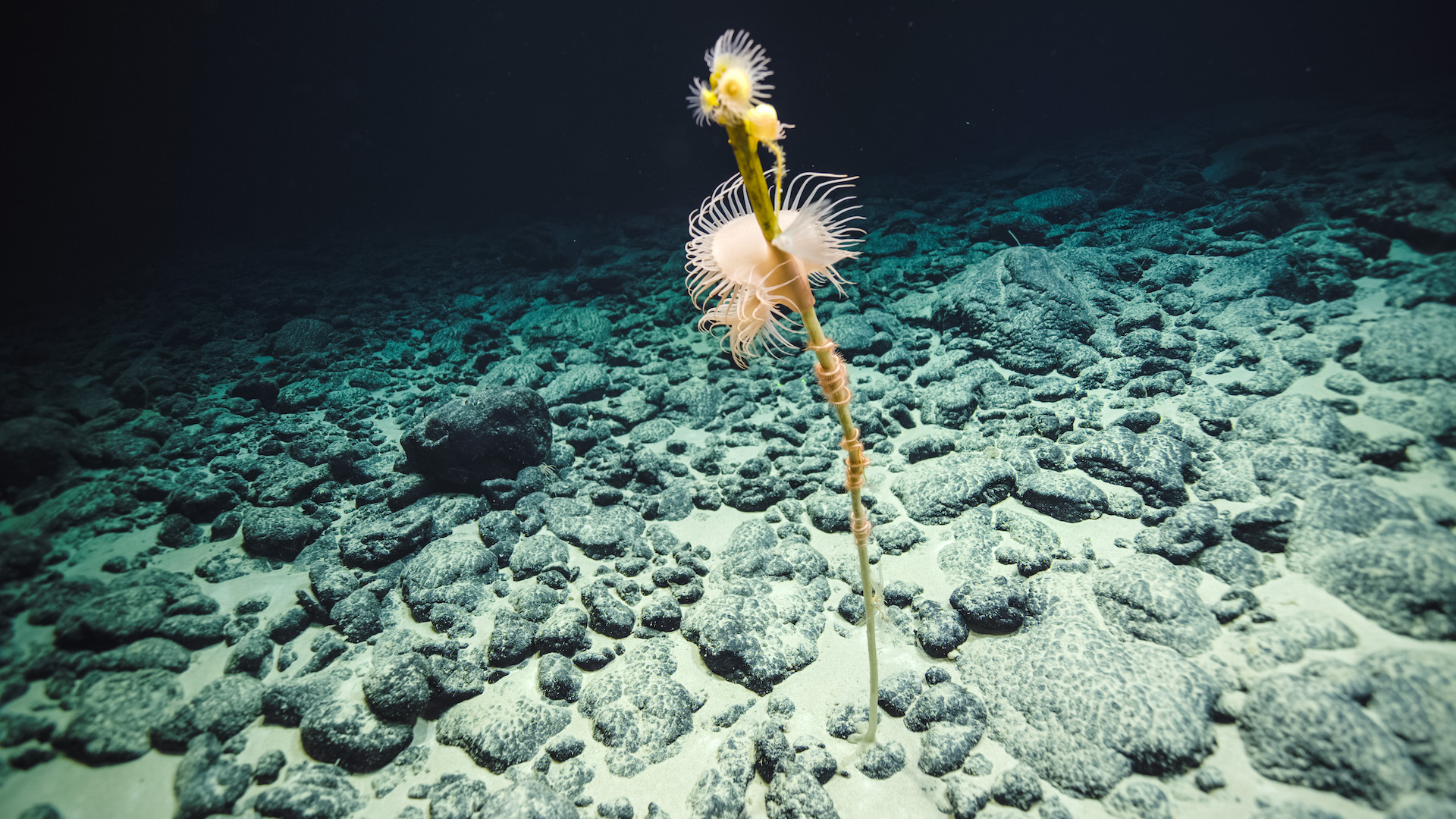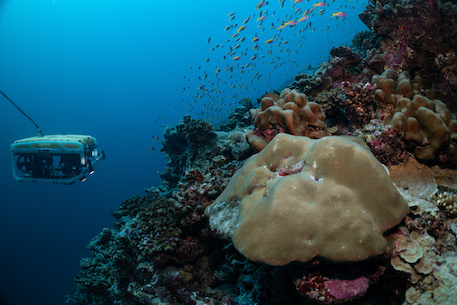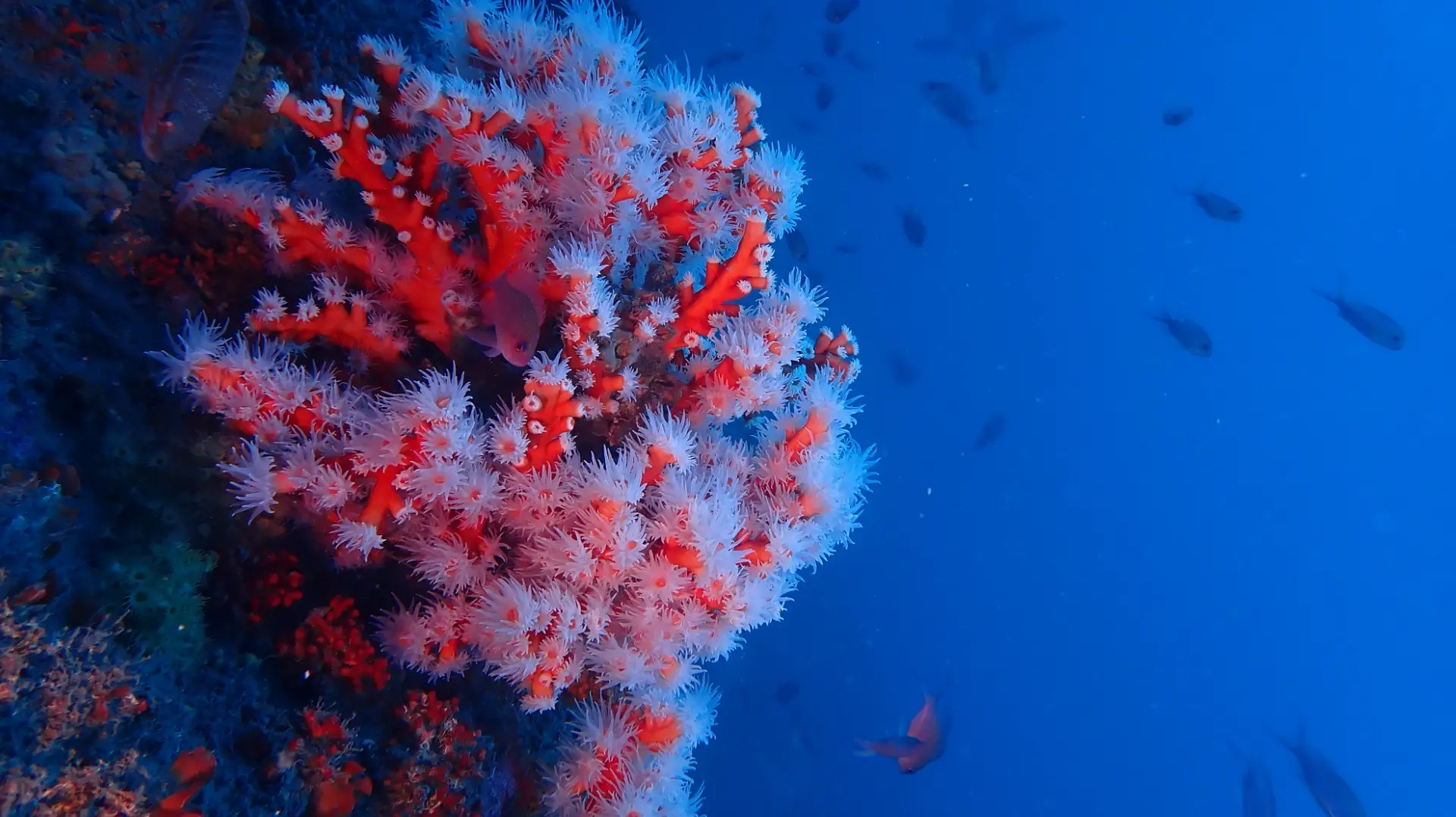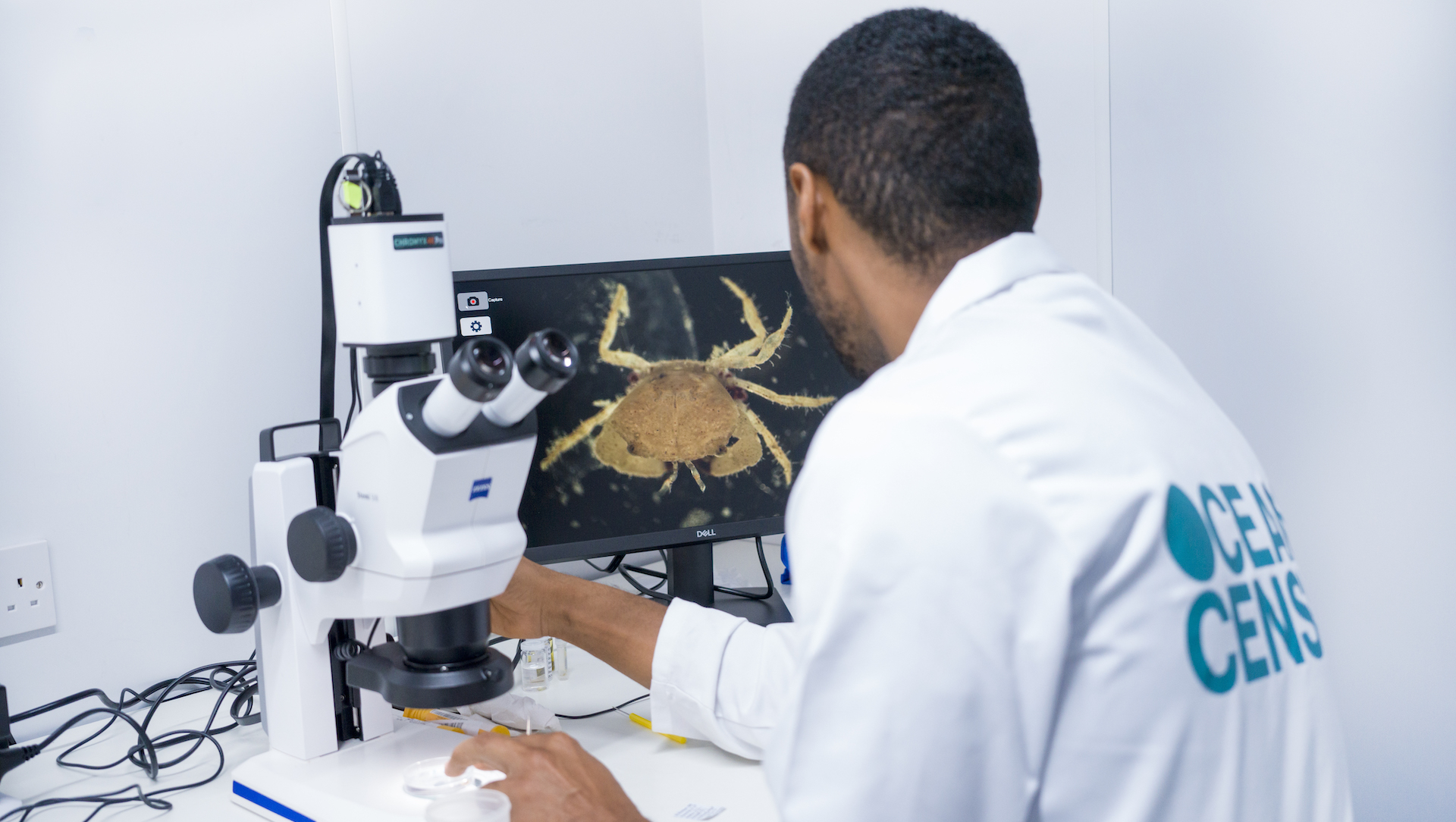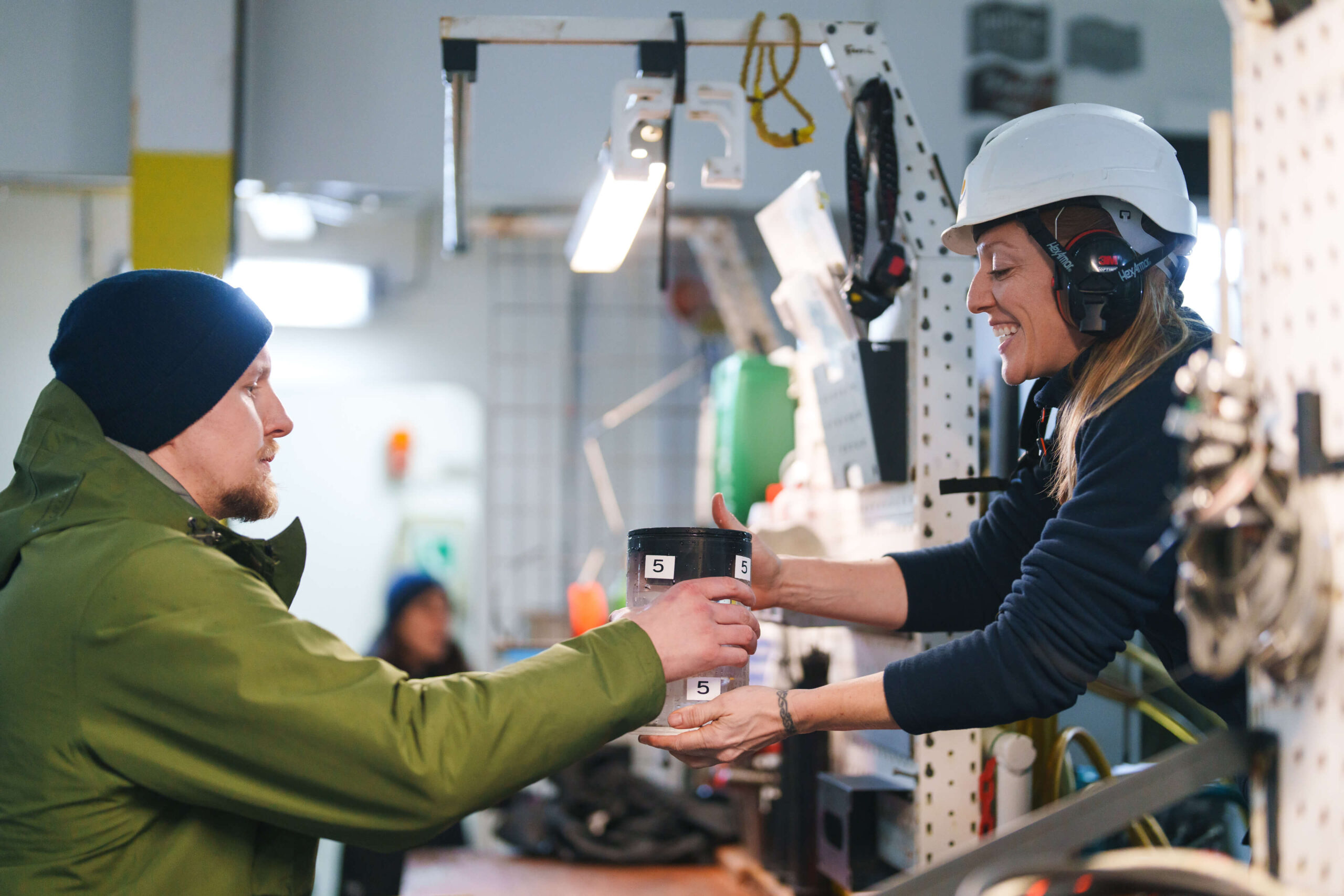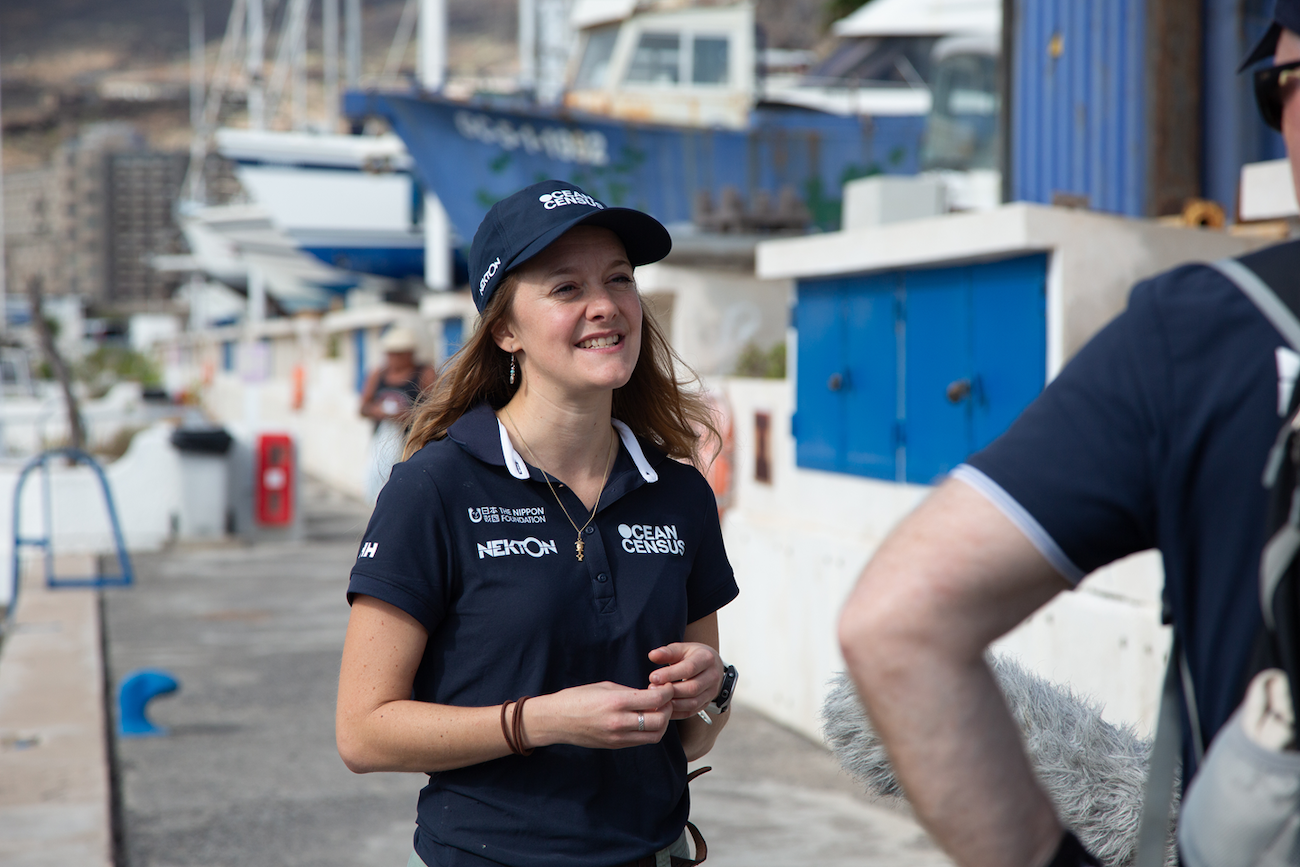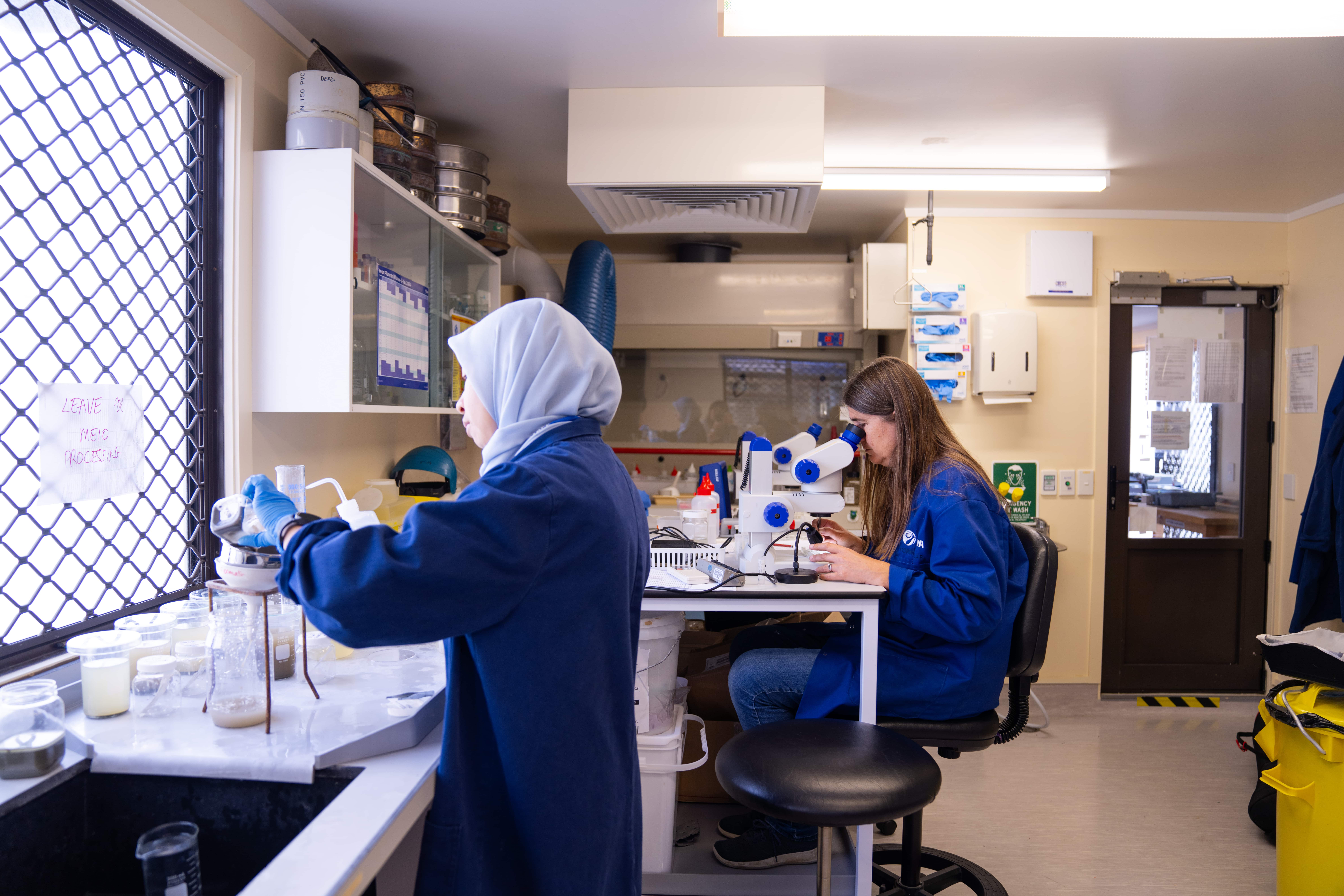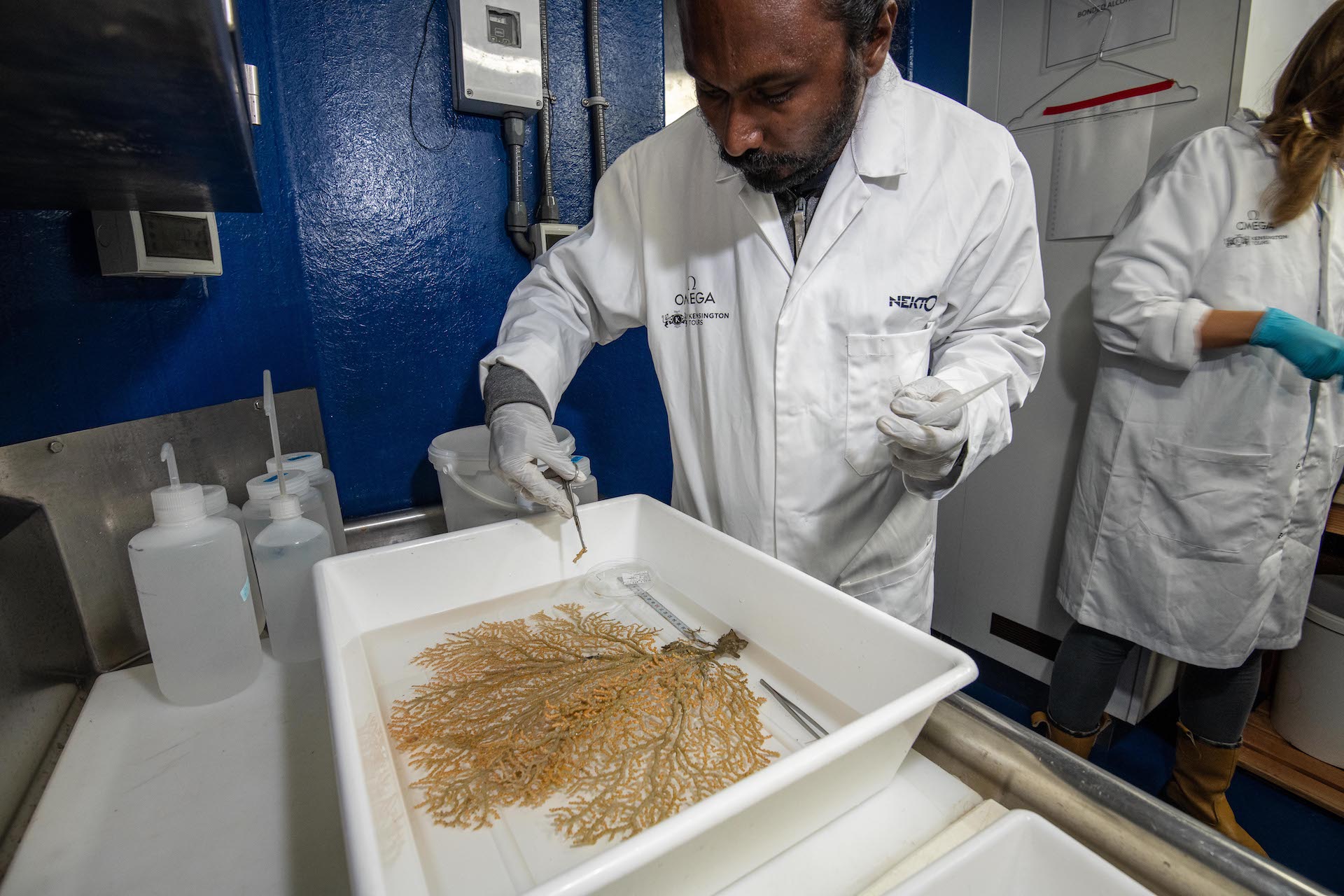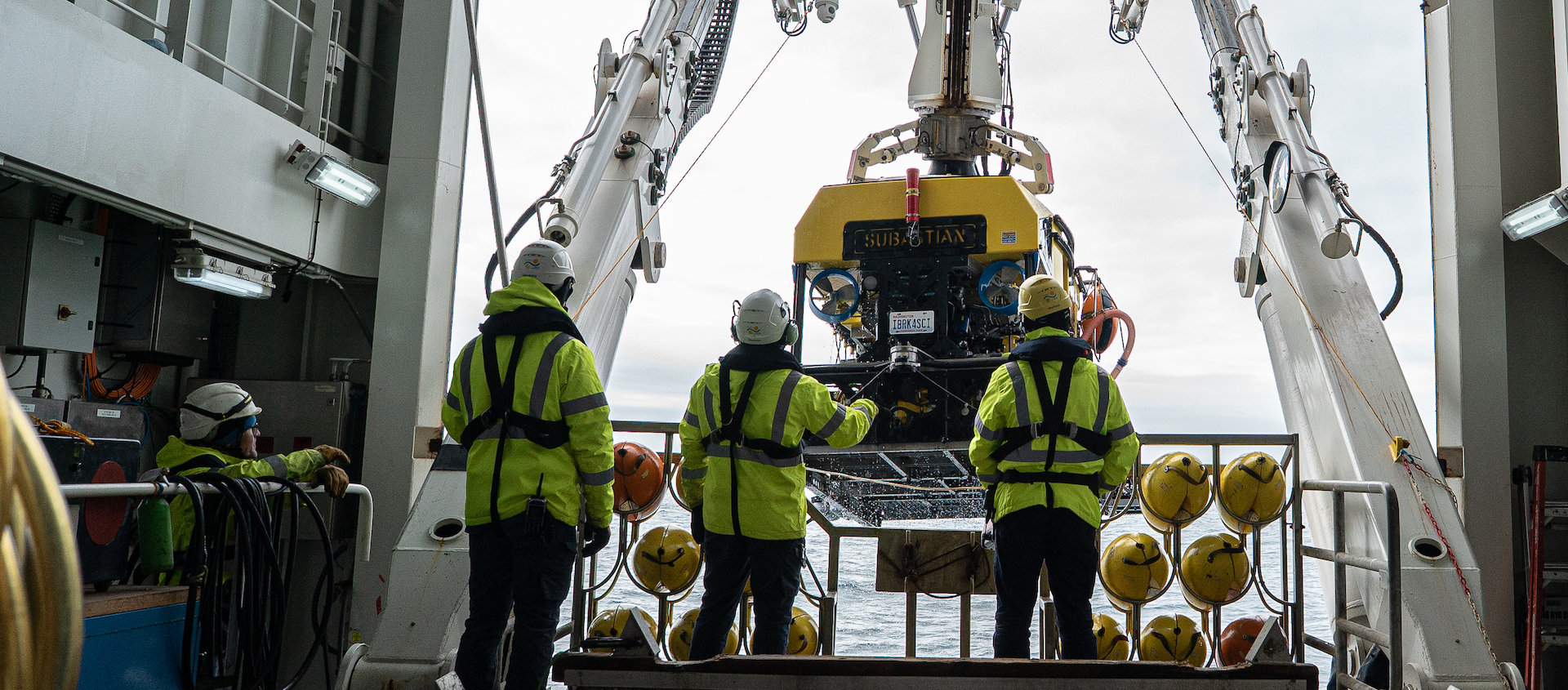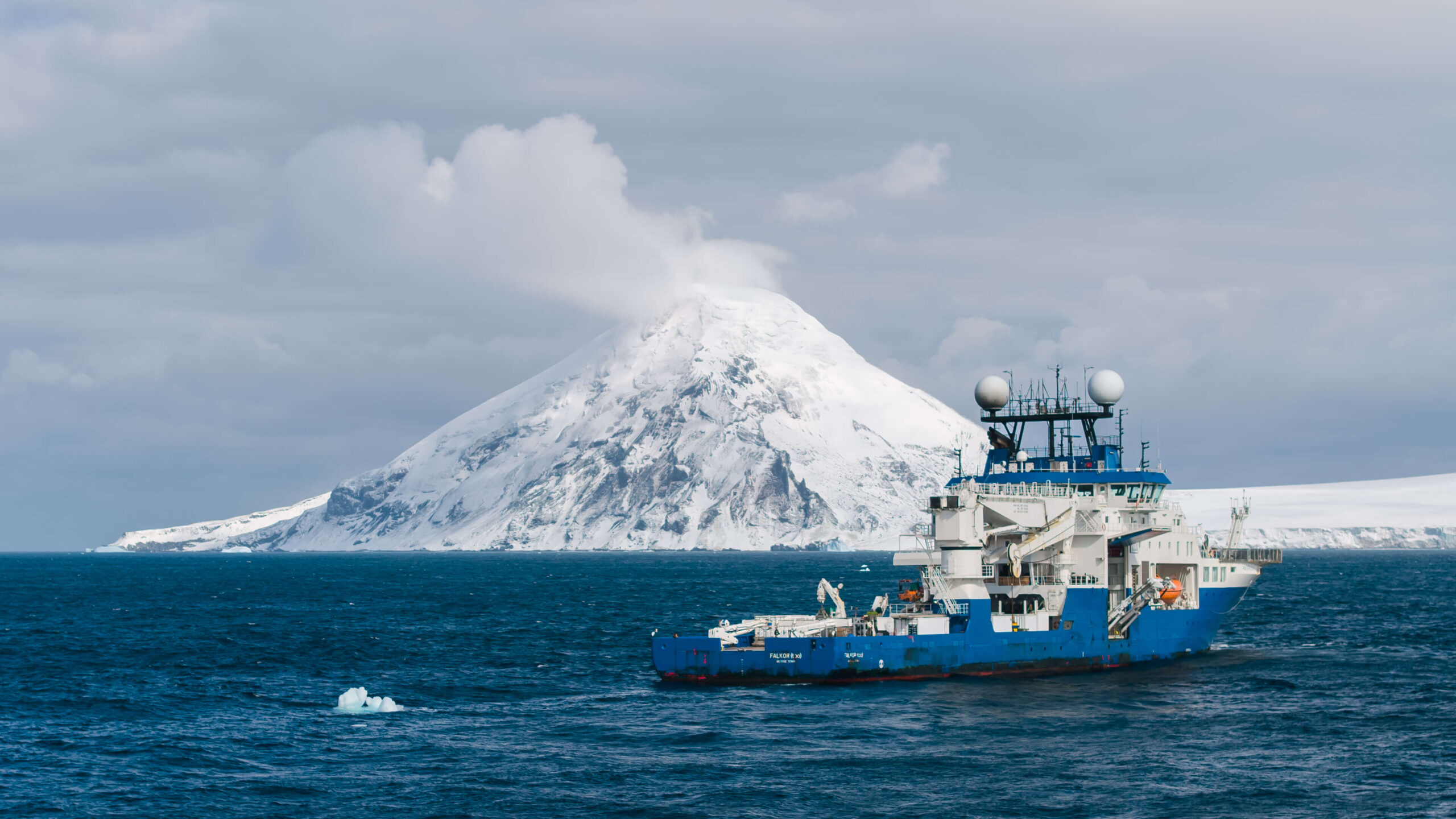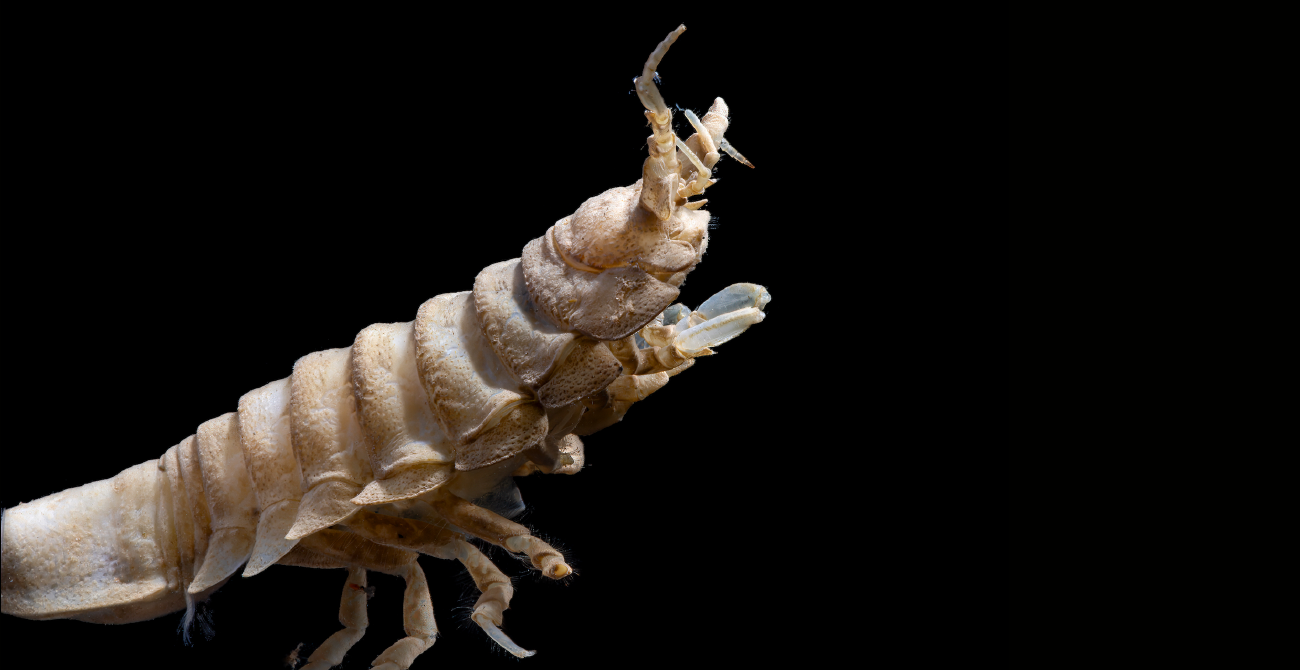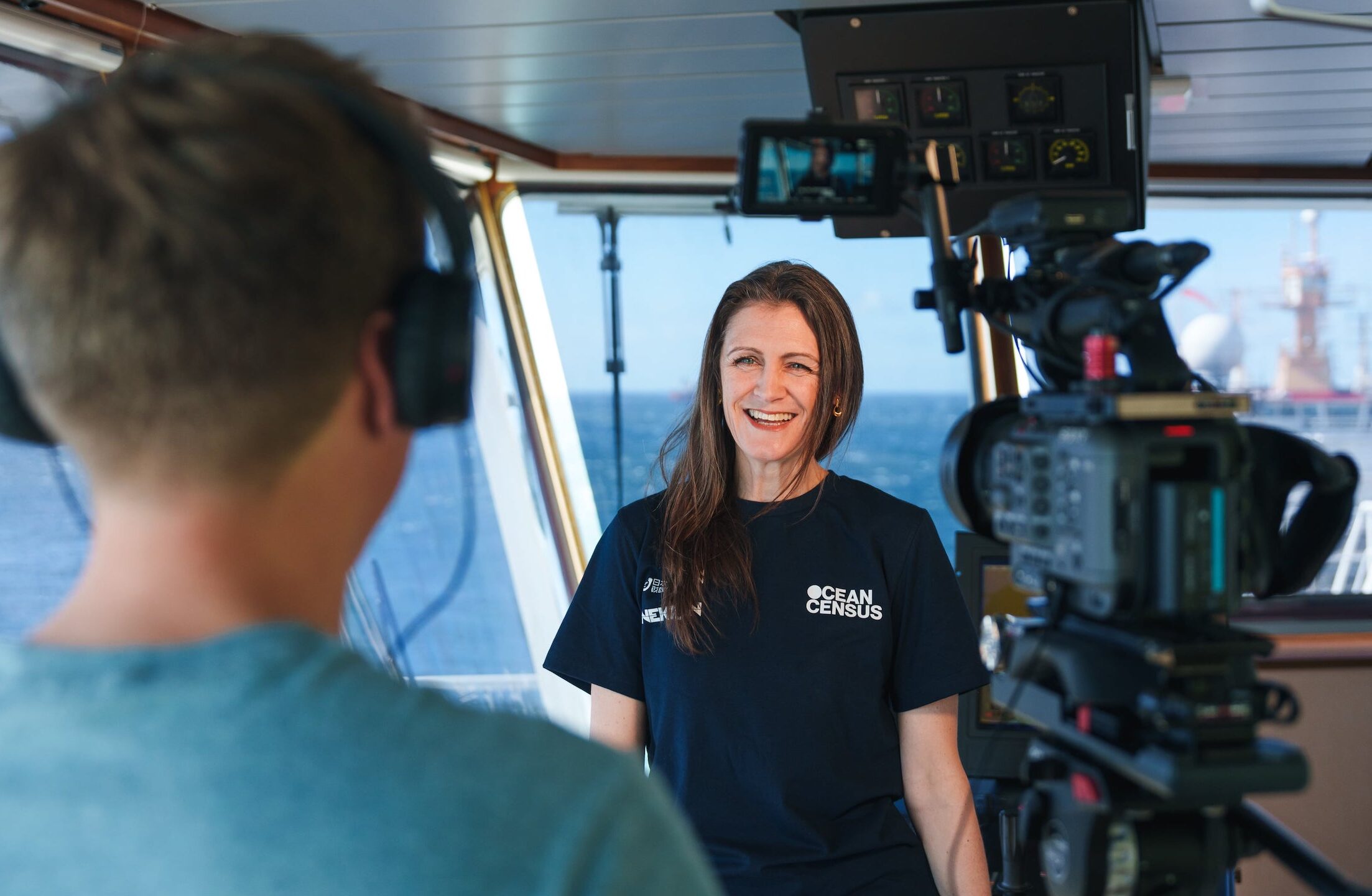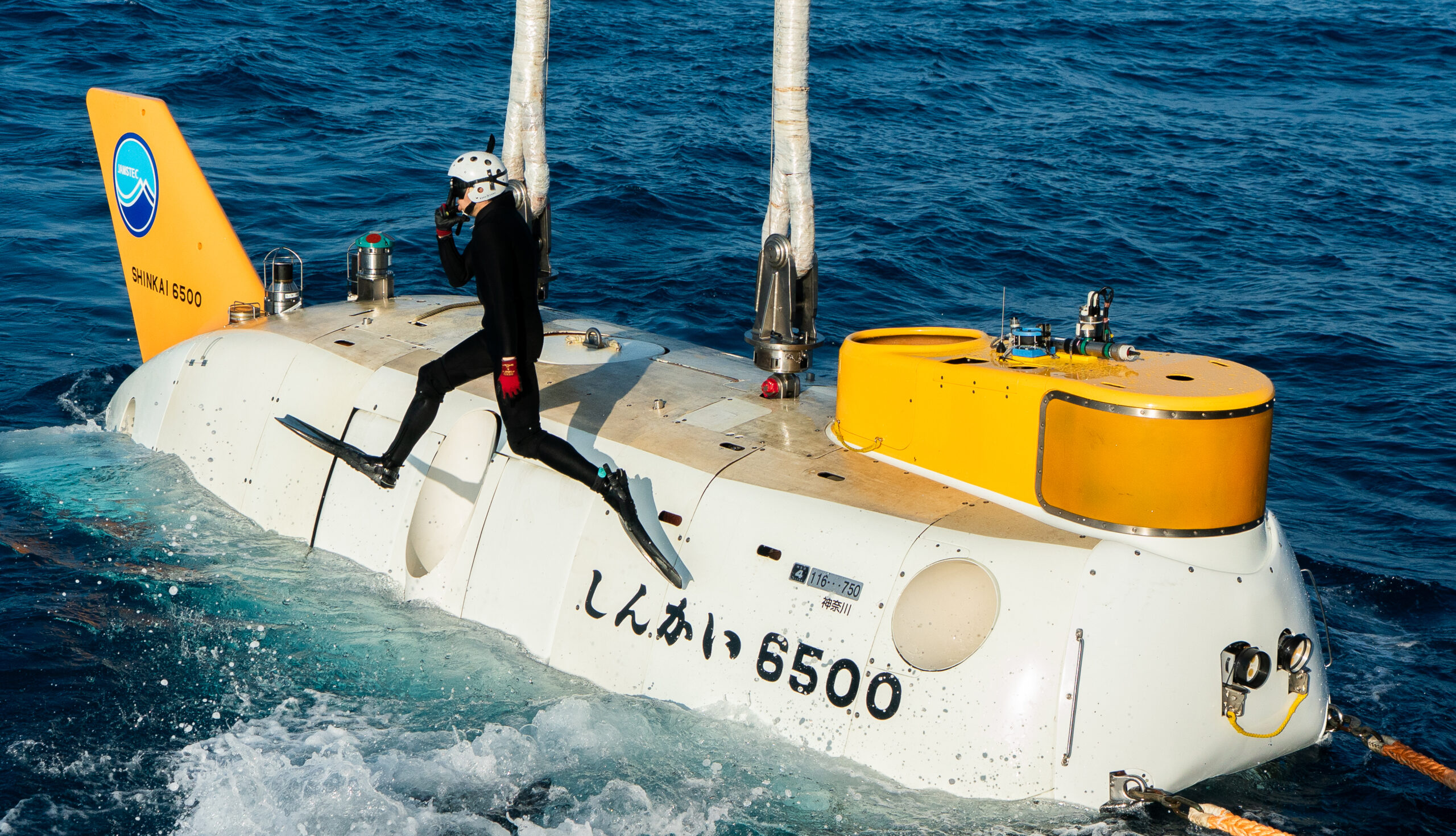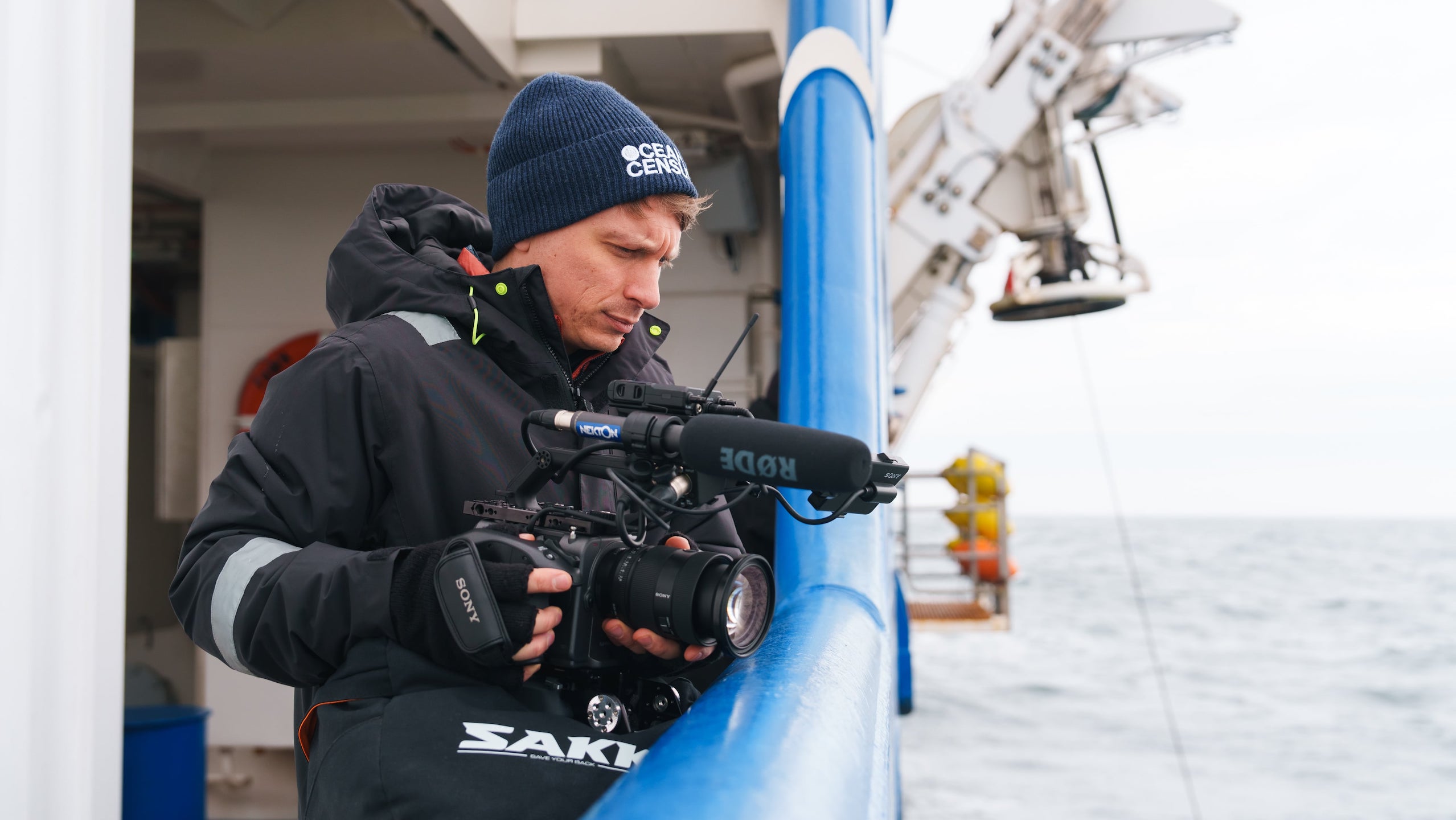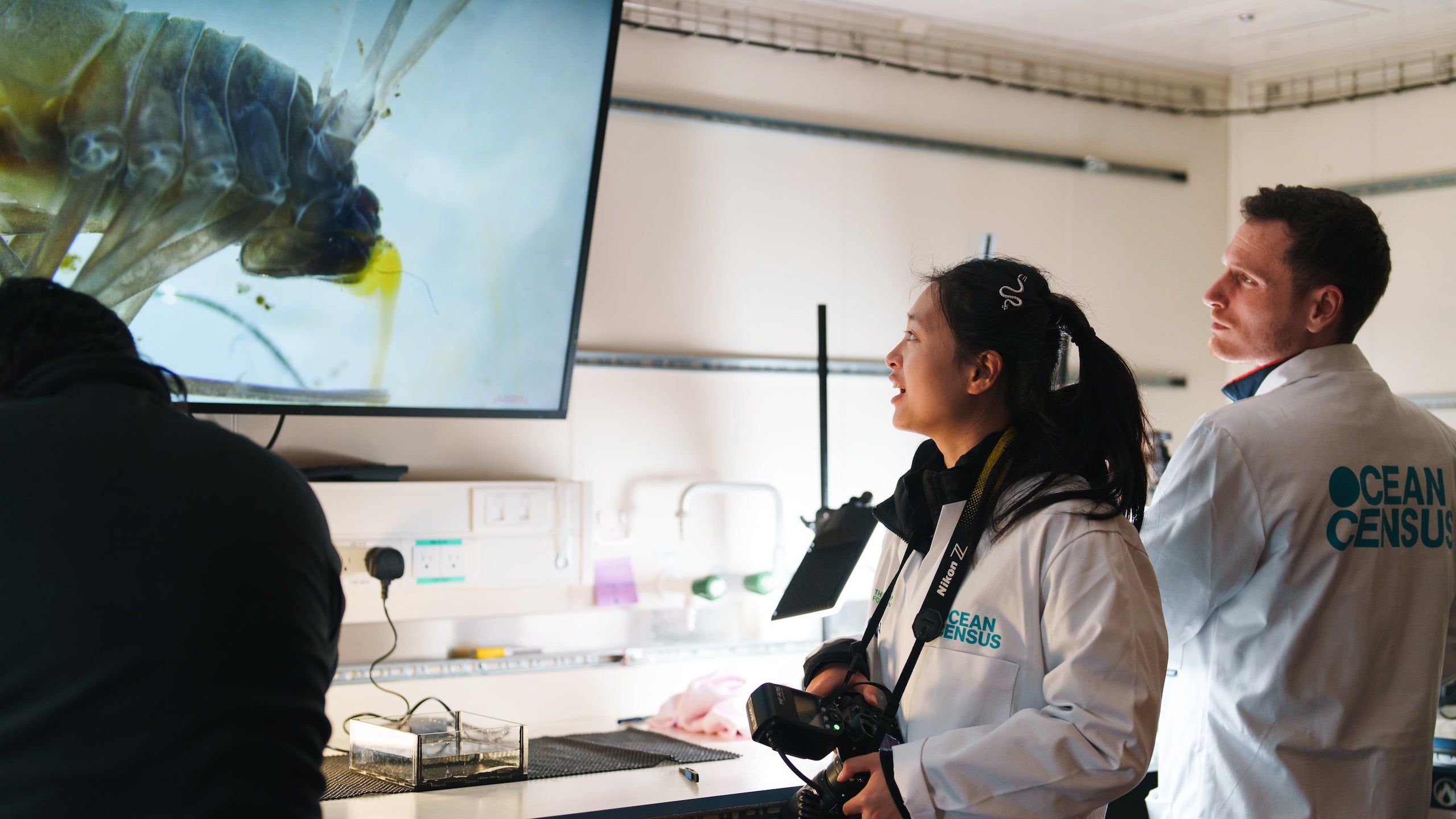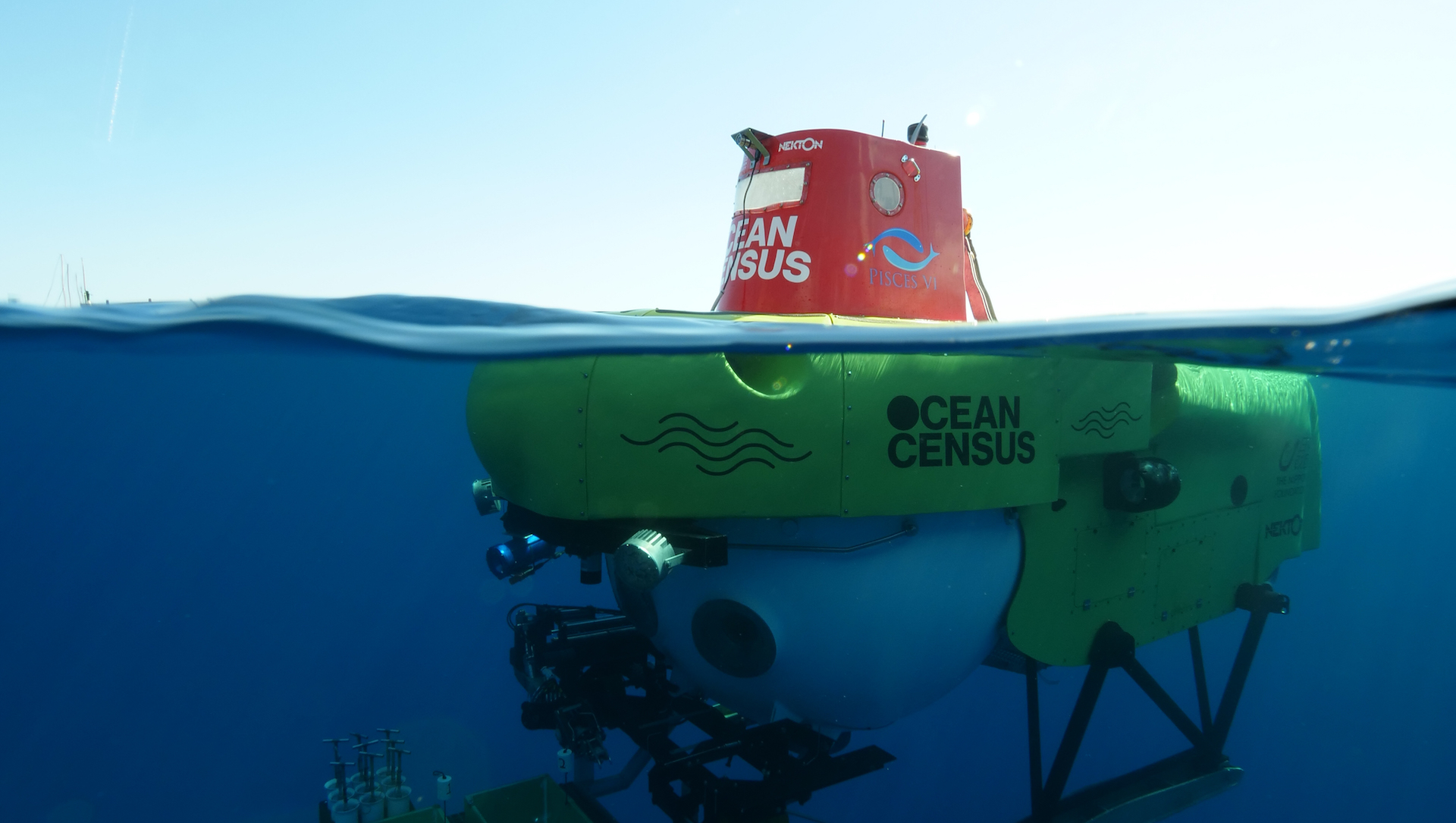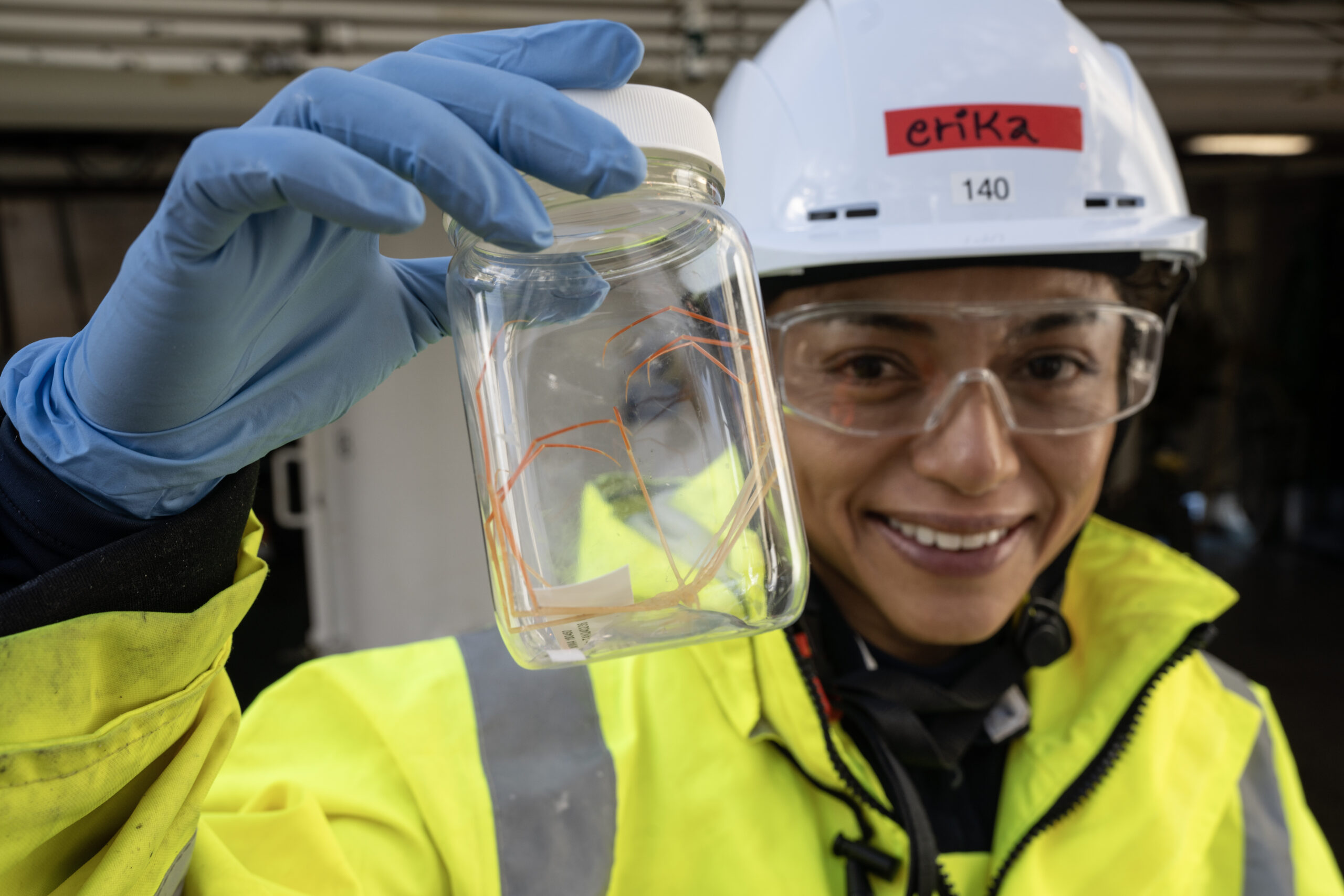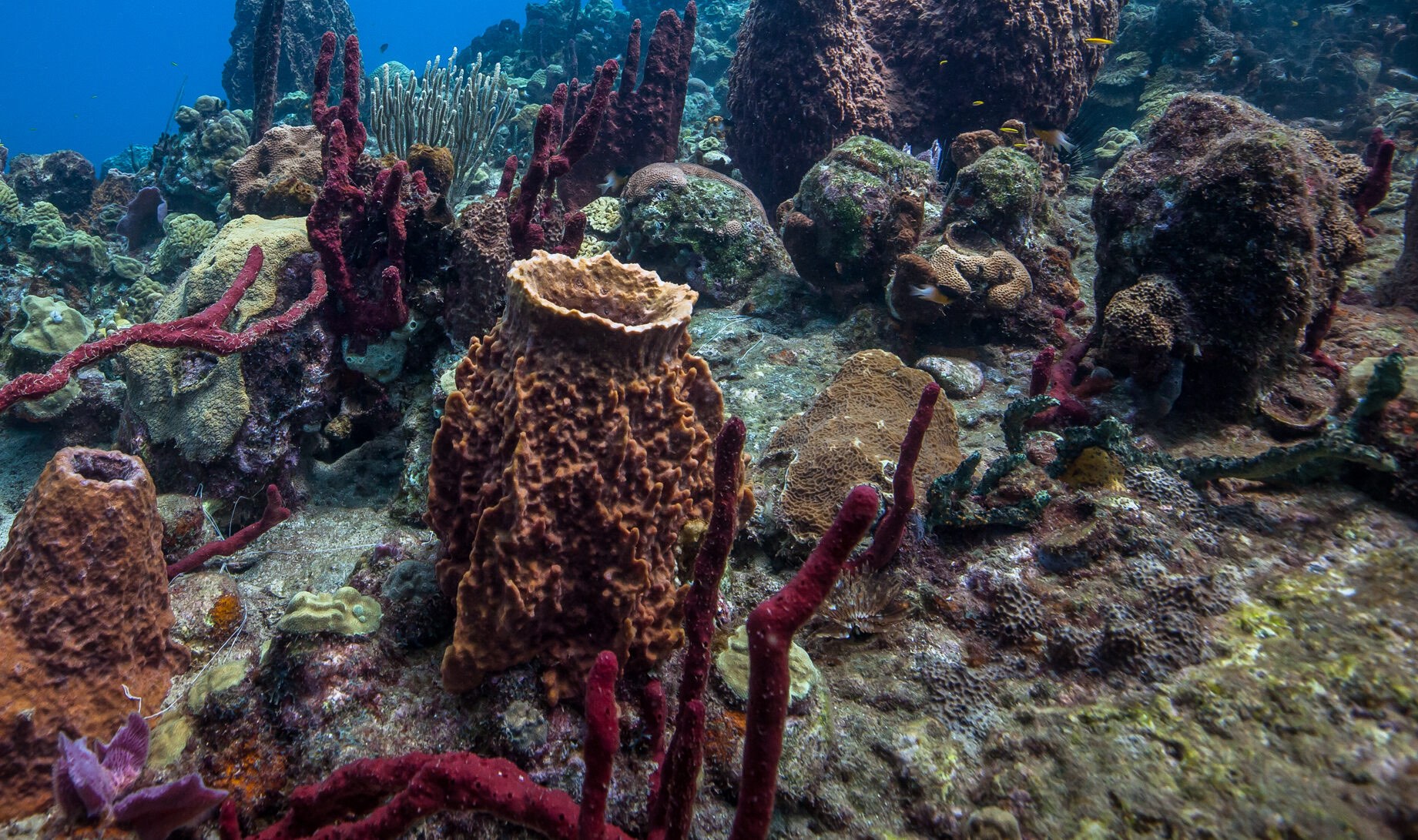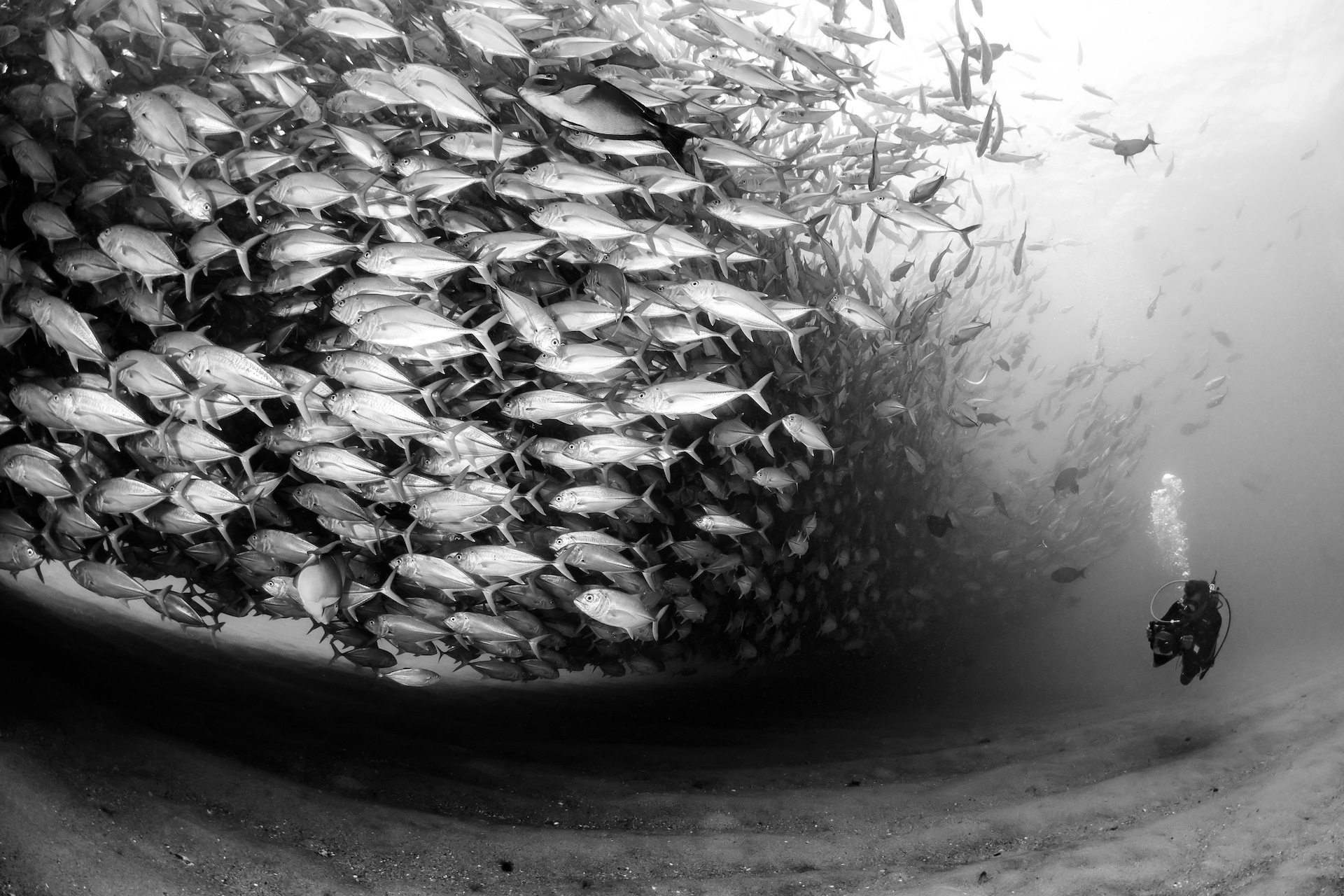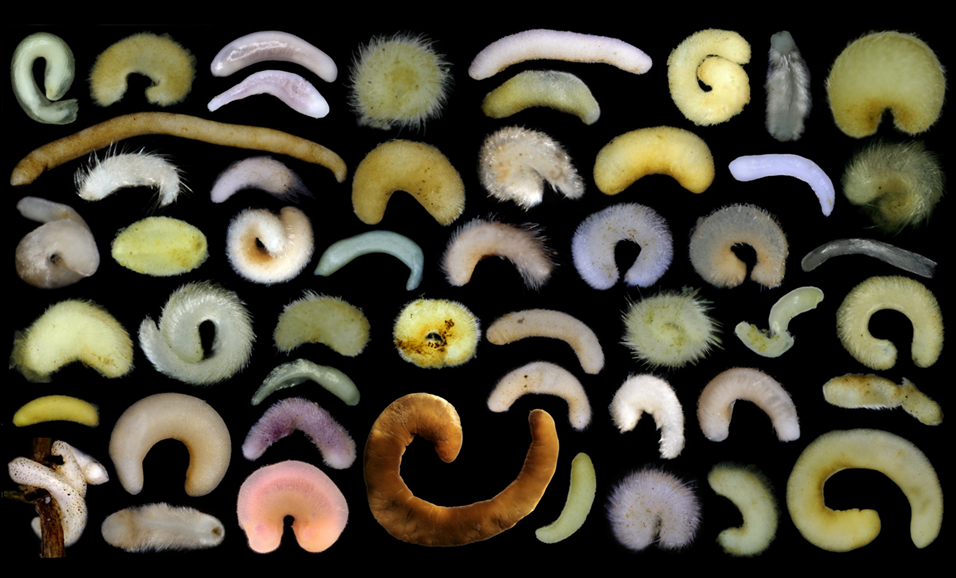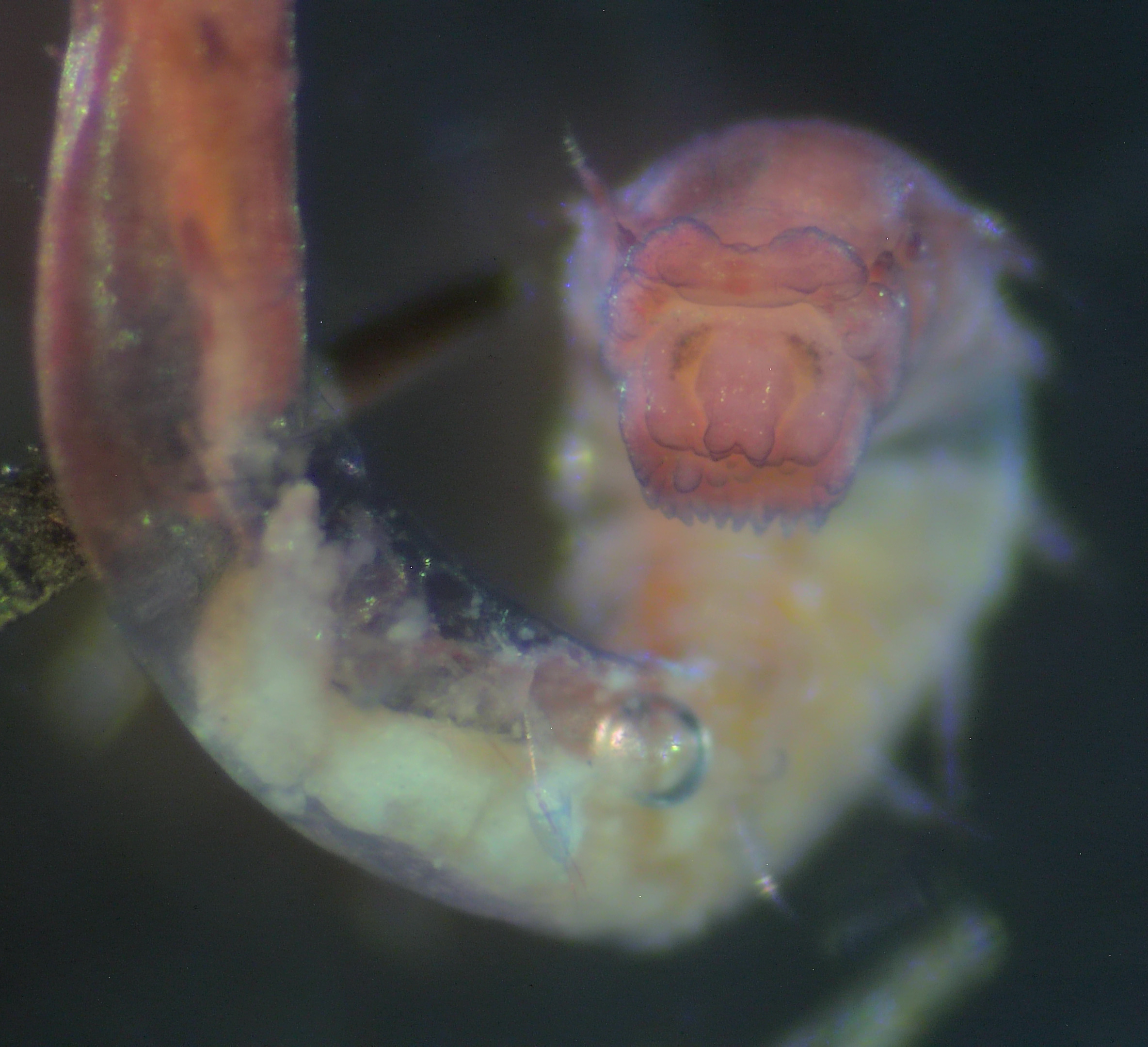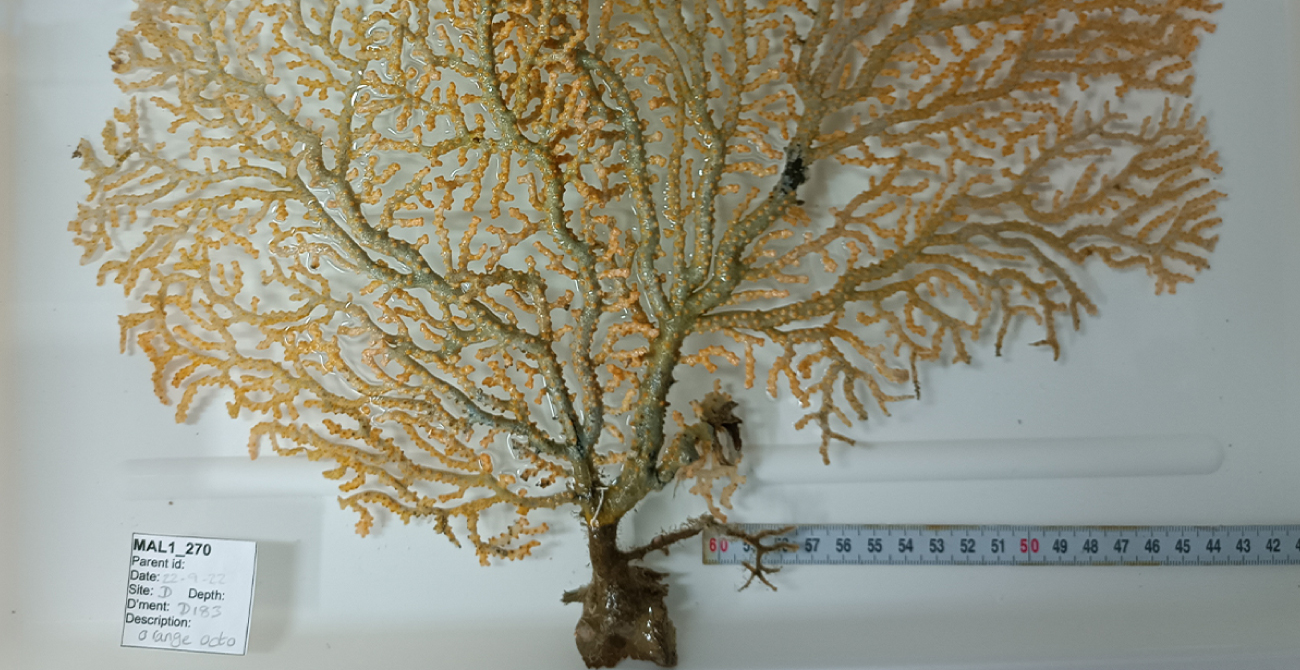
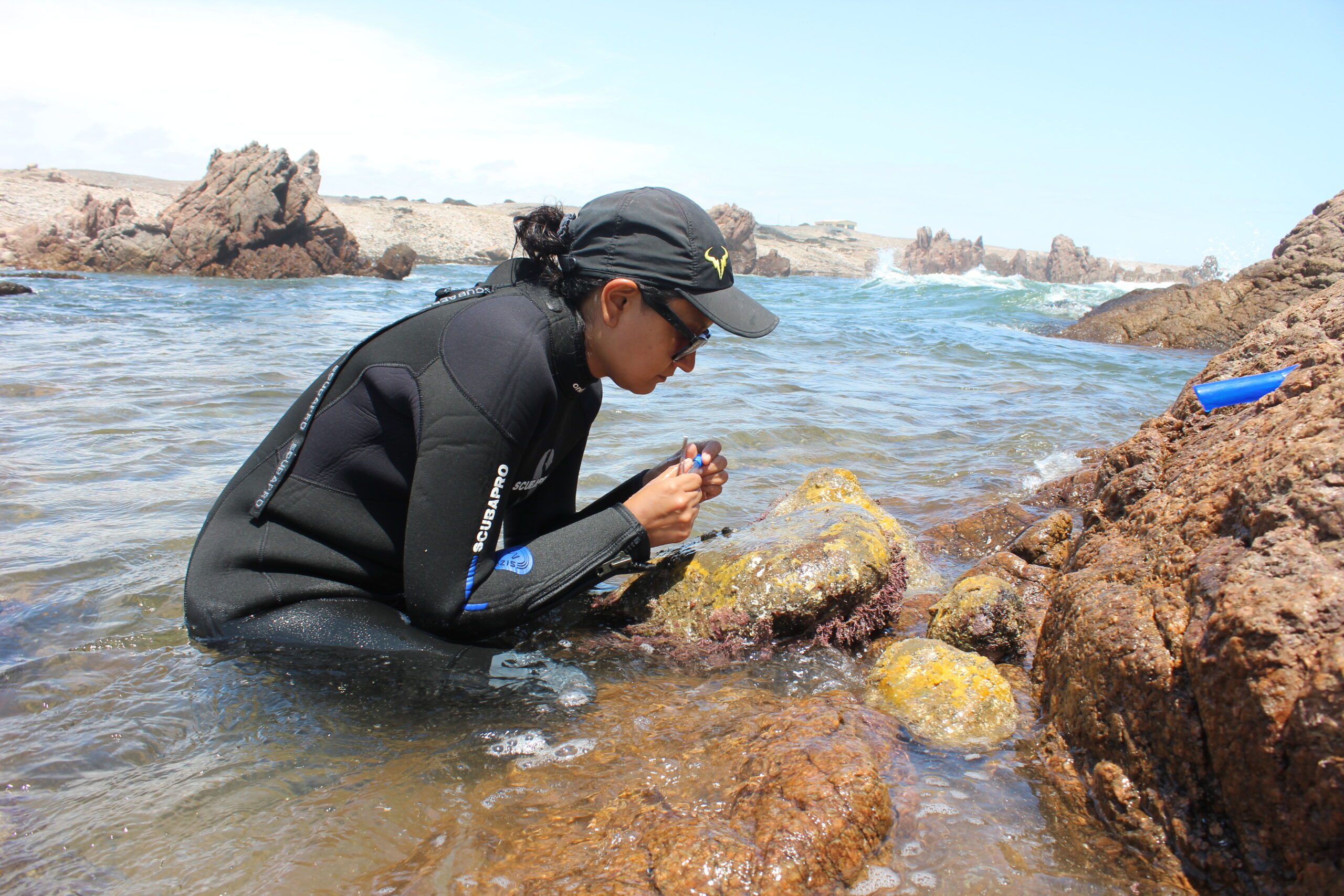
More Than Just For Cleaning:
The importance of Sponges for
Marine Ecosystems
Overlooked but ecologically vital organisms
As we prepare to announce the 2025 Ocean Census Species Discovery Award recipients this summer, we’re revisiting the inspiring work of our 2024 awardees—exceptional individuals advancing marine biodiversity science around the globe. One such awardee is Báslavi Cóndor Luján, whose commitment to species discovery goes beyond the lab or the field—and directly into the hands of her students.
We spoke with some of Báslavi’s students to learn more about their work exploring sponges, one of the ocean’s most overlooked but ecologically vital organisms. Through Báslavi’s mentorship, these students are gaining hands-on research experience while contributing to the global mission of Ocean Census: to accelerate the discovery of marine life.
What led you to focus on the diversity of sponges in Peru and Southeast Pacific?
“Sponges are among the least studied organisms in Peru, along with many others that at first glance seem to have no significant importance to humans. As a result, the biodiversity of our country is highly undervalued. Based on current knowledge, these organisms are a crucial part of their ecosystems, functioning as structures used as homes of many other organisms, from algae to fish.
I was particularly drawn to the subtle complexity of these organisms, often interpreted as very primitive and simple animals, the wide variety of aquifer systems that include adaptations like carnivorous sponges, their vast taxonomic diversity, and their distribution in the ocean.
Being part of this project significantly adds to the knowledge of new species, which in turn helps to develop methods for their protection and preservation. Equally, this helps to better understand their role in ecosystems, particularly in areas of high diversity such as the globally renowned Peruvian sea.”
– Hugo Vicente (a student of Báslavi)
“In our search for resources with antimicrobial and antibiofilm potential, we investigated little-explored resources. We ended up choosing one that has a great impact but is not always valued. We focused on sponges because they are a fundamental part of marine fauna, both as filter feeders and through their cooperation with other organisms.
Furthermore, they are highly prolific in terms of shape, size, colour, and adaptation to different environments. Our research is important because it will support the few studies that exist on the bioactivity of sponges and their associated microorganisms.
Studying these organisms will provide more information on the diversity and complexity of microbial interactions with their hosts (sponges), their role in coastal ecosystems, and their relevance in the synthesis of metabolites.”
– Grace Eslava and Alison Boulangger (a student of Báslavi)
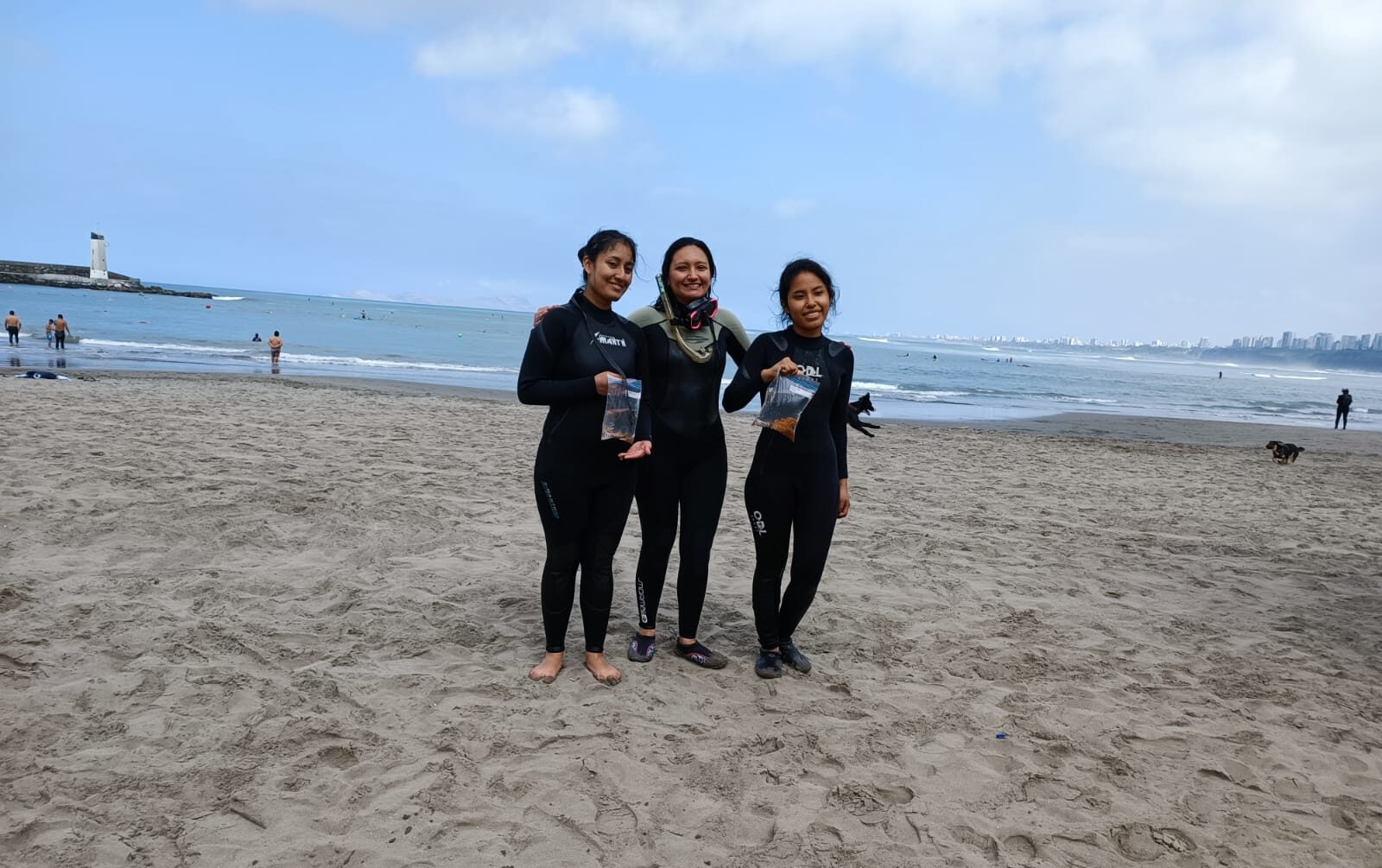
Alison, Báslavi, and Grace with sponge samples. Image Credit: Báslavi Cóndor Luján
Why is the examination and identification of different sponge species important?
“Identifying the different types of sponges is crucial to understanding their diversity, evolutionary history, biology, and relationships, which in turn emphasises the importance of their conservation.
Sponges filter large volumes of water through their bodies, feeding on bacteria, unicellular algae, and dissolved organic matter. Their economic importance lies in marine pharmacology, biochemistry, medicine, biology, and more.
Despite being sessile, sponges possess a wide range of biotoxins, both for defence against predators and to prevent attacks from other dangers.
Marine sponges are a significant source of compounds with antiviral activity, such as Ara-A, avarol, and calyceramides, which act against viruses like Herpes Simplex, HIV-1, and Influenza.
These discoveries could lead to the creation of new medications and antiviral treatments. Therefore, establishing a baseline for the identification of sponges is essential to ensure scientific research and utilise them as economic resources.”
– María Orozco (a student of Báslavi)
“The Phylum Porifera consists of four classes (Demospongia, Calcarea, Hexactinellida, and Homoscleromorpha), which differ in features such as skeleton composition, consistency, aquifer system type, reproductive and feeding strategies, and habitat.
Despite their global diversity and distribution, this group of primarily marine invertebrates is one of the least studied compared to other benthic organisms, due to a lack of easily identifiable features and their variable forms during development.
Researching this group is essential due to their broad ecological and biotechnological significance. They provide critical ecosystem services (e.g., the sponge loop, provision of microhabitats), participate in benthic-pelagic coupling through particle resuspension, and play a key role in various ecological processes.”
– María José Sánchez (a student of Báslavi)
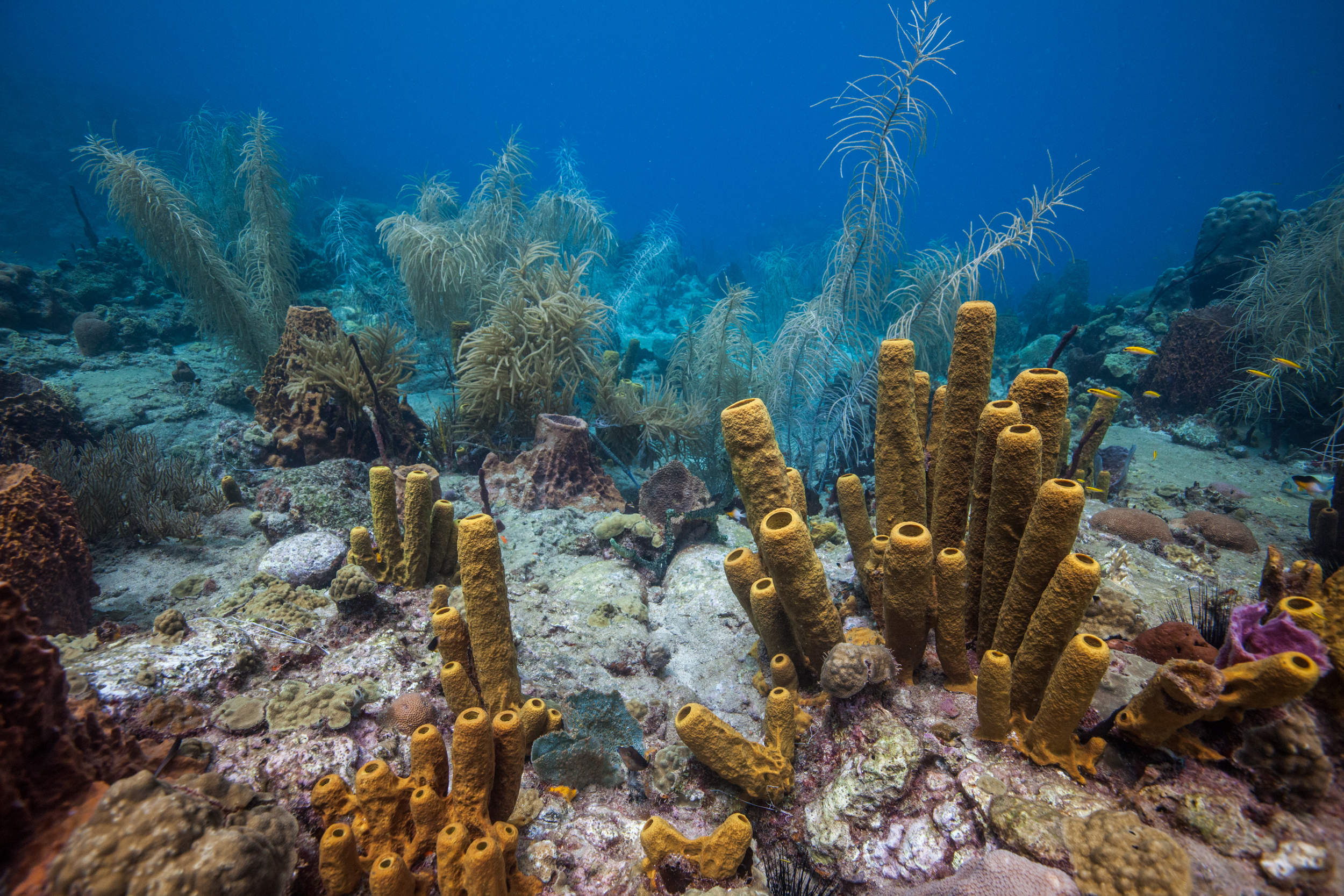
Credit: Philip Hamilton / Ocean Image Bank
Can you explain why combining morphological examination with DNA sequencing is critical?
“Our approach involves a series of independently developed analyses, including morphological and/or morphometric studies, which may or may not be integrated, focusing on a thorough review of macro- and microscopic characteristics that define each specimen and its environment. These results are compared with the relevant literature.
Simultaneously, genetic, bioinformatic, and phylogenetic analyses using molecular techniques are conducted, with results defining variability, similarity, and relationships with other recorded species or groups, contributing to the understanding of their evolution. Combining these disciplines is crucial because, for a long time, traditional systematics relied primarily on morphological characteristics for species identification.
However, marine invertebrates like sponges exhibit limited morphological traits that are prone to environmental variations, leading to confusion and misunderstanding of their true biology. Morphology does not always align with genetic boundaries or evolutionary adaptations.
Thus, relying solely on morphological review can result in incorrect identifications, hindering the understanding of their ecological, biotechnological, and speciation importance, as well as biogeographical patterns, ultimately limiting decisions about their protection and conservation.”
– María Sánchez (a student of Báslavi)
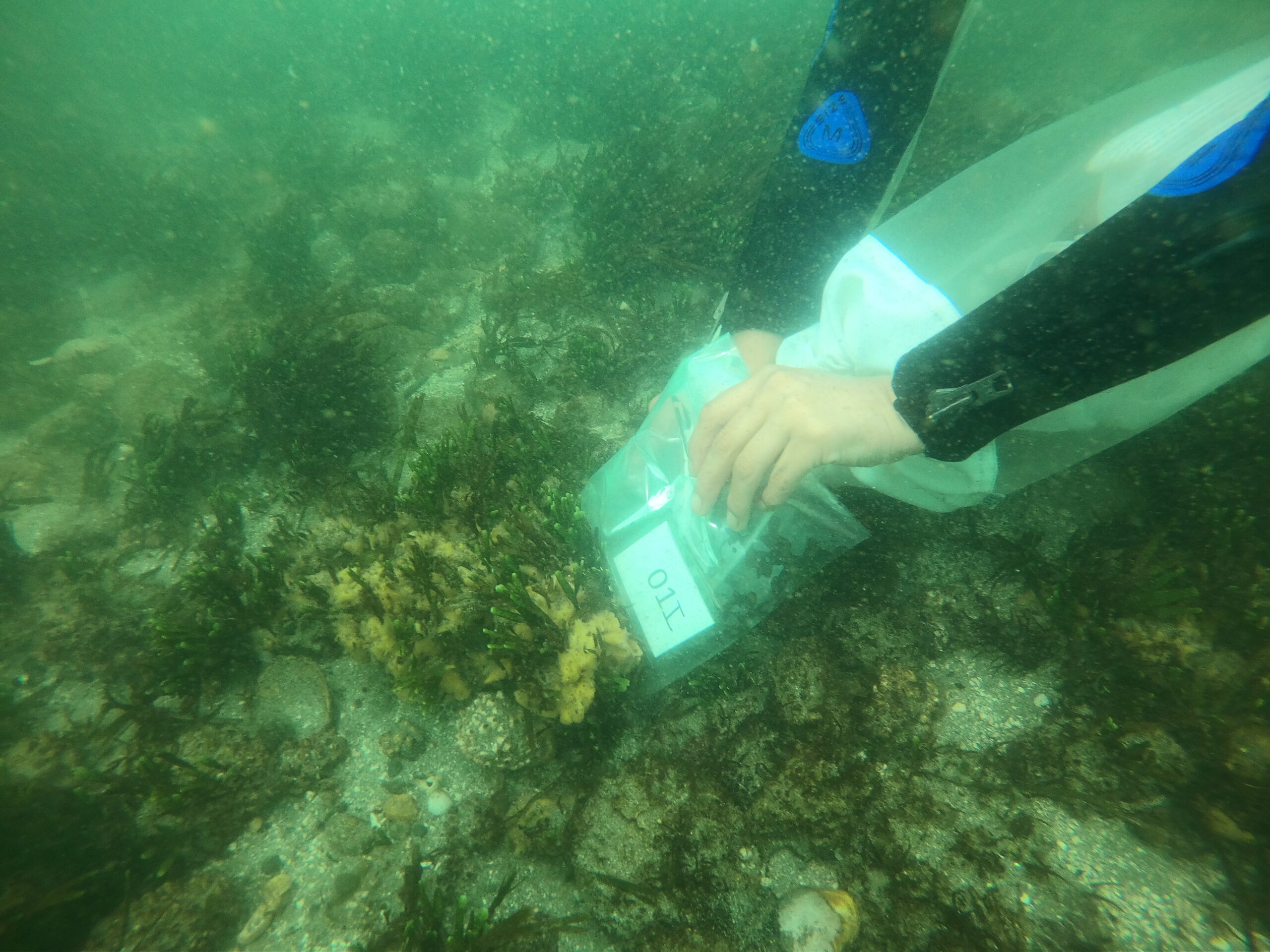
Collecting sponge samples from the sea floor. Image Credit: Báslavi Cóndor Luján
Could you explain the process of species identification using scanning electron microscopy (SEM) and molecular tools?
“Taxonomic identification of marine sponges combines the use of scanning electron microscopy (SEM) and molecular tools for a more detailed and accurate analysis. SEM allows for meticulous observation of the morphology and size of spicules, which are often unique and distinctive among species.
Molecular techniques, such as the sequencing of specific genes after DNA extraction and amplification, confirm species identity and resolve cryptic species cases or propose new ones. These methods complement each other by validating identification at both morphological (visually perceptible) and genetic levels.”
– Alvaro Arteaga (a student of Báslavi)
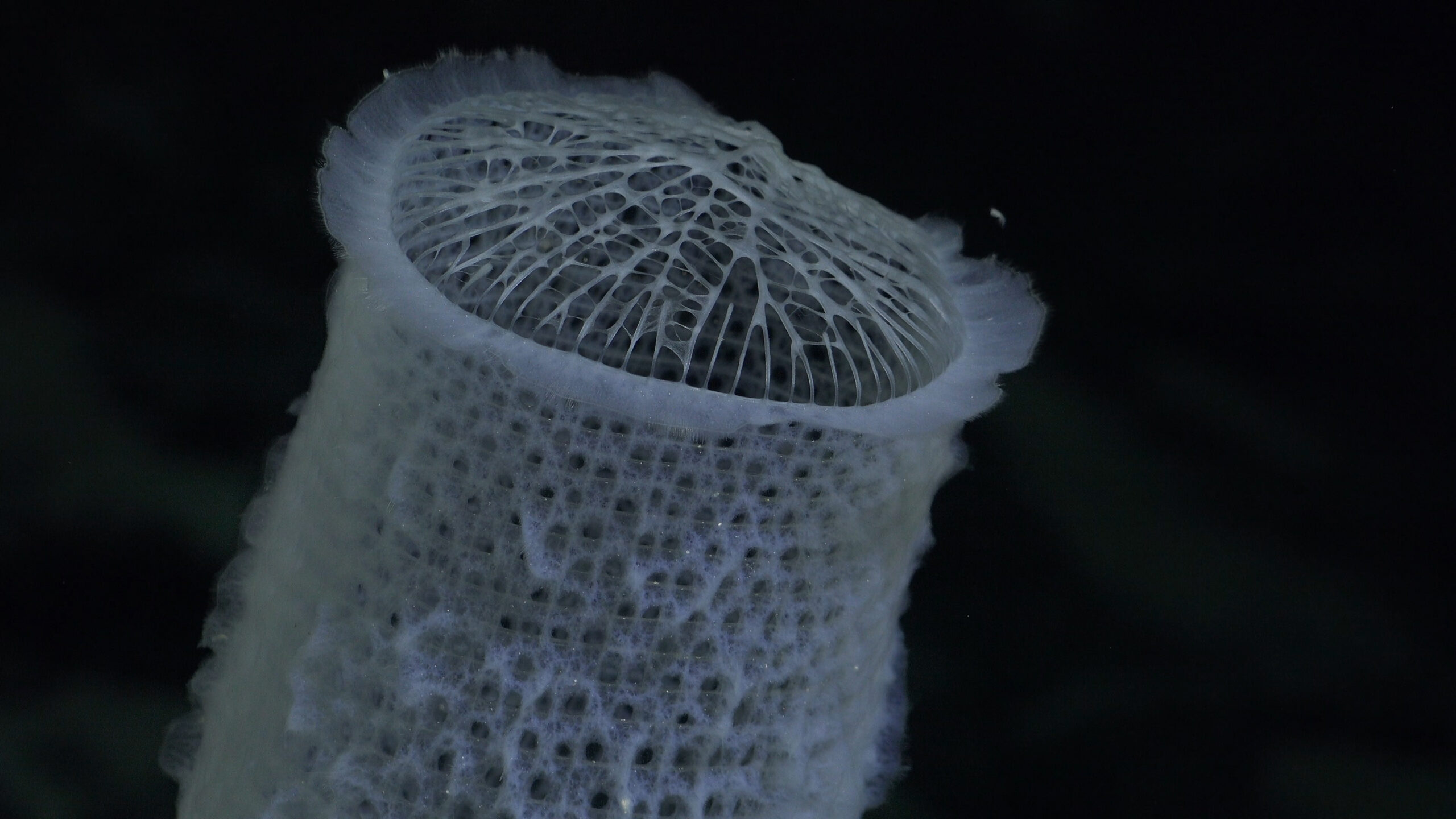
Credit: ROV SuBastian / Schmidt Ocean Institute
What challenges have you encountered in identifying sponge species?
“The identification of marine sponges presents several challenges, primarily due to their extensive morphological variability. A single species can adopt different shapes and sizes depending on environmental conditions, complicating identification based solely on external morphology.
Additionally, examining spicules—microscopic structures that make up the sponge skeleton—is necessary. This analysis requires equipment like electron microscopes, as well as illustrated guides and expert mentors who provide detailed knowledge of spicule taxonomy, which can show considerable diversity in size and shape, even within the same species.
This often necessitates complementing morphological studies with molecular analyses for accurate identification. Consequently, the study of these organisms not only requires advanced techniques but also an integrated approach that considers both macro and microscopic variability along with molecular analysis for precise identification.”
– Christian Polo (a student of Báslavi)
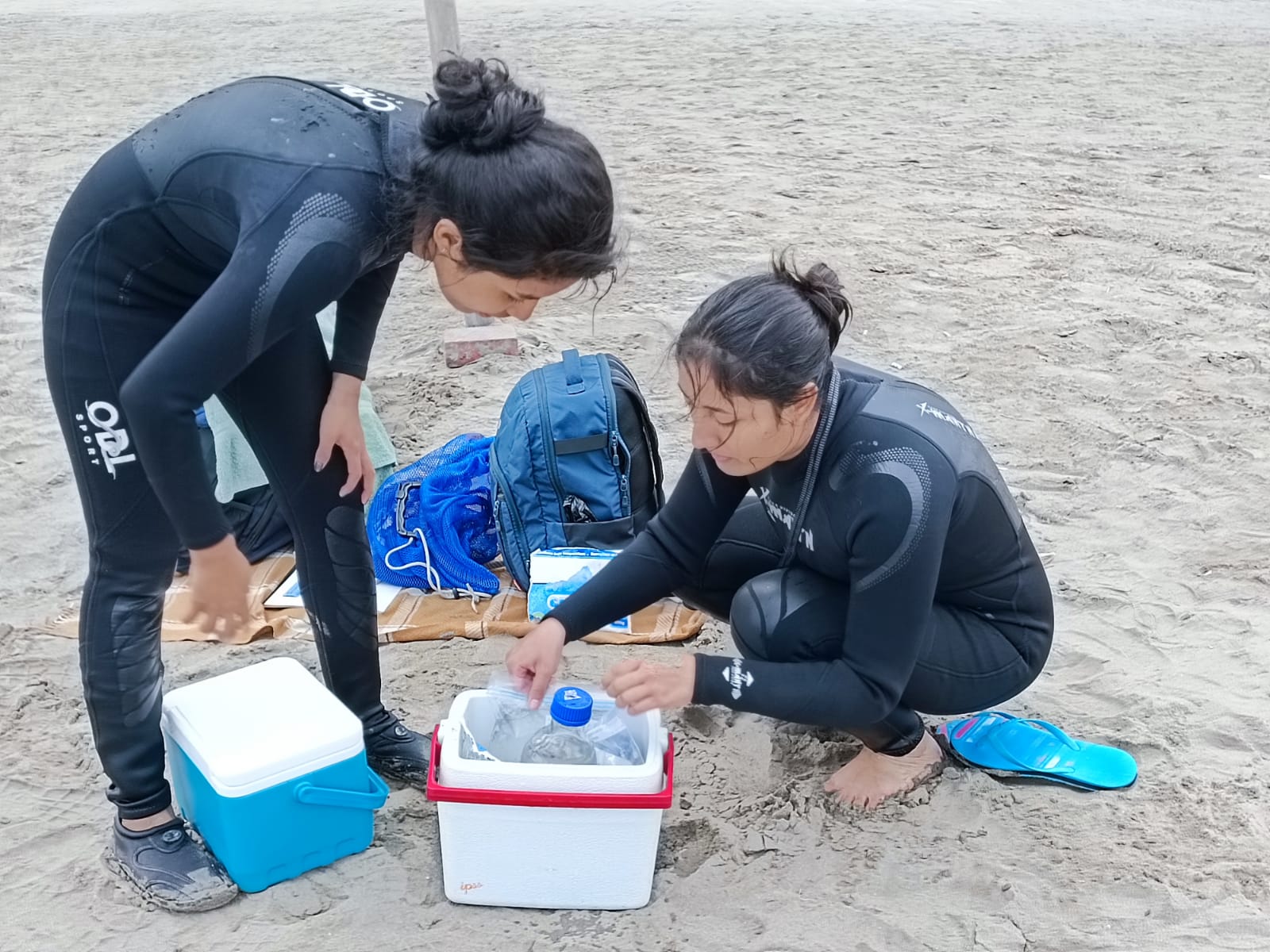
Grace and Alison fixing samples. Image Credit: Báslavi Cóndor Luján
What are the main outcomes you hope to achieve from this project?
“The primary result of this project will be the identification and description of at least 10 new sponge species in Peru through an integrative taxonomy approach, significantly contributing to the knowledge and characterization of this group in the country and establishing a solid foundation for future research.
The knowledge generated will not only contribute to scientific understanding but also to the formulation of marine conservation strategies that promote ocean protection.”
– Luz Morales (a student of Báslavi)
“We aim to achieve results that significantly contribute to the taxonomy and understanding of marine sponges in the Southeast Pacific. This project seeks to describe new species through detailed analyses of their morphology and genetics, including DNA sequencing, internal and external morphological studies, and spicule identification and measurement.
The goal is to identify distinctive characteristics for precise taxonomic classification. This integrative approach will not only create a reference framework for future marine biodiversity studies but also provide valuable data on the status and distribution of sponges in the region.
Furthermore, this project will be fundamental in anticipating how changes in climate conditions may affect these marine communities. By providing a deeper understanding of these species’ ecology, the findings will enable the establishment of future conservation plans to protect the biological and structural diversity of these ecosystems. This will be essential for the resilience of Southeast Pacific ecosystems, given that sponges are key indicators of environmental health.”
– Sol Vásquez (a student of Báslavi)
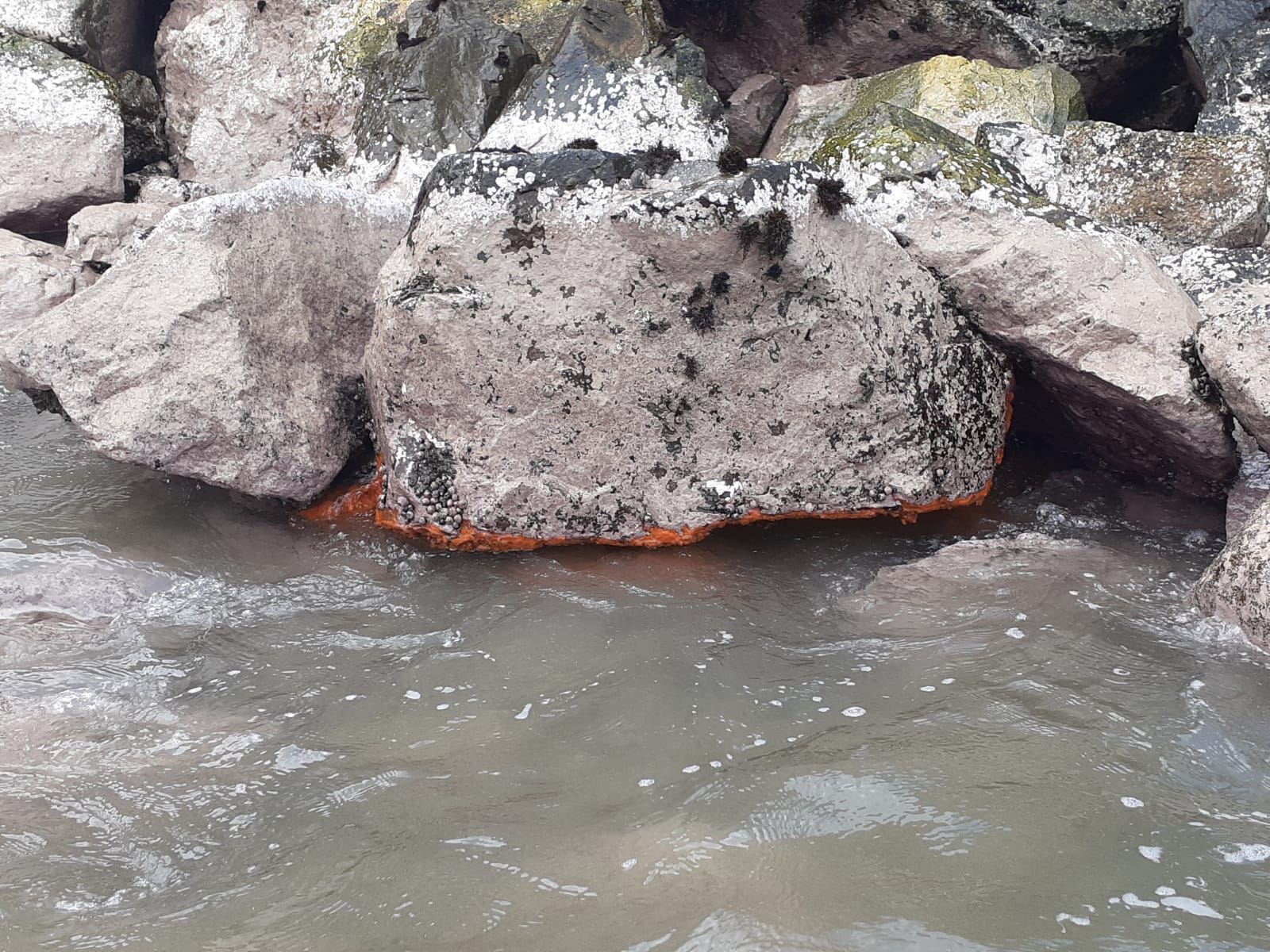
Hidden Sponge beneath the shoreline rocks. Image Credit: Báslavi Cóndor Luján
Learn more about the Ocean Census Species Discovery Awards
The Ocean Census Species Discovery Awards support outstanding taxonomists, biodiversity and community scientists involved in marine species discovery.
The 2025 Species Discovery Award application deadline has now closed. Thank you to those that have applied.
Recipients will be announced soon.
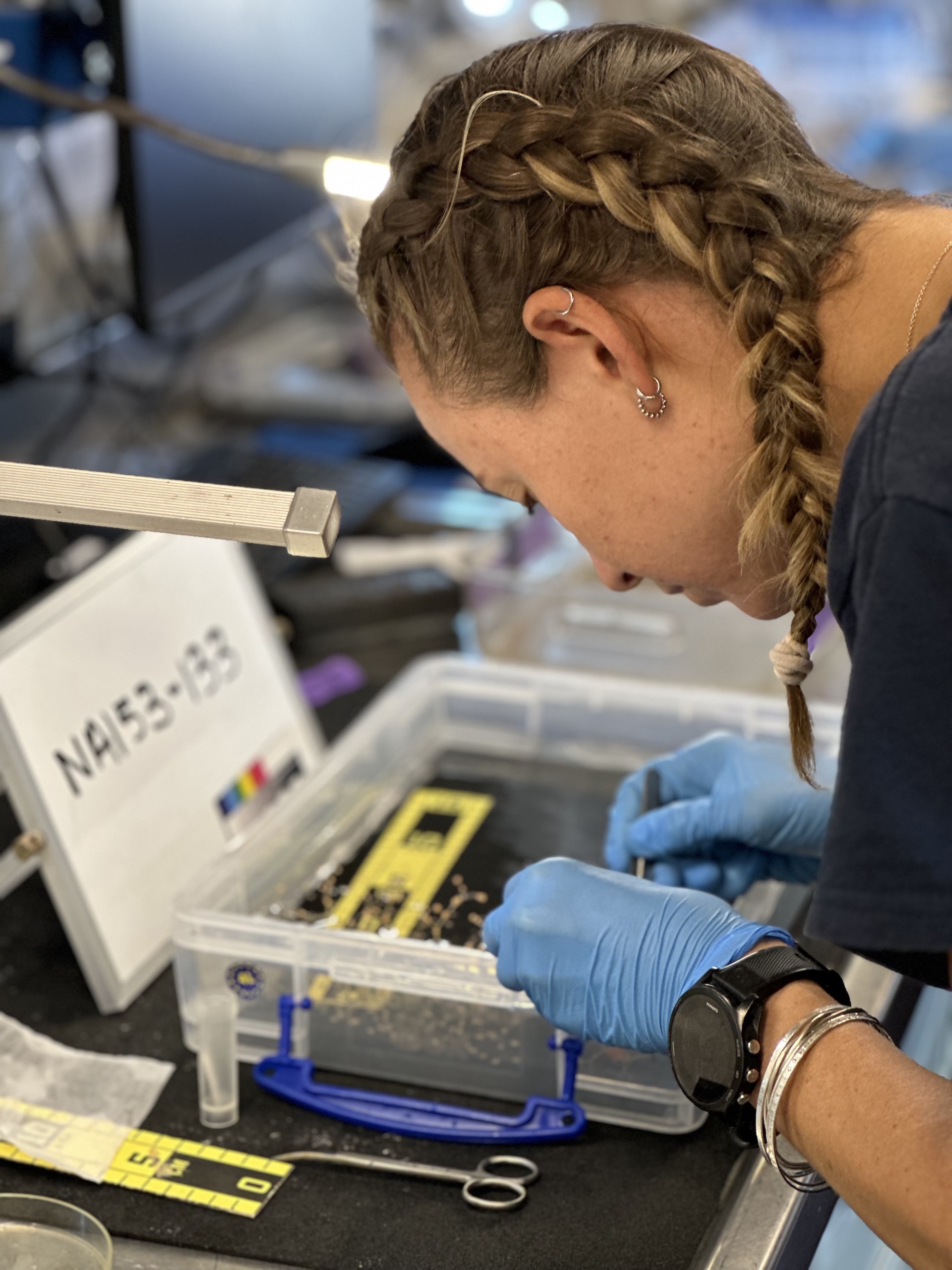
Related News
Join the census
The Ocean Census Alliance unites national and philanthropic marine institutes, museums, and universities, backed by governments, philanthropy, business and civil society partners.
